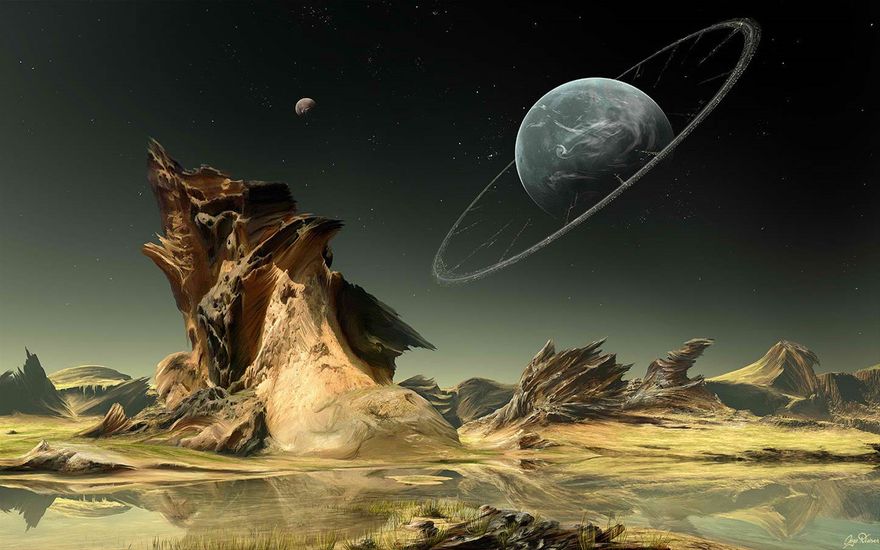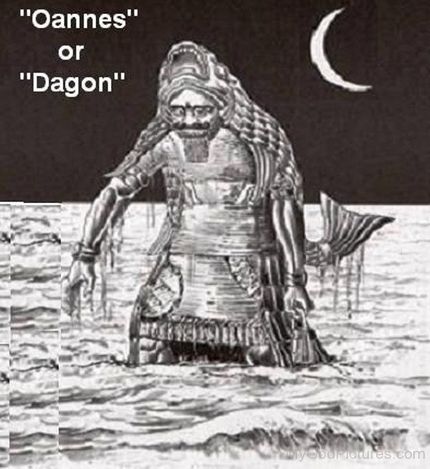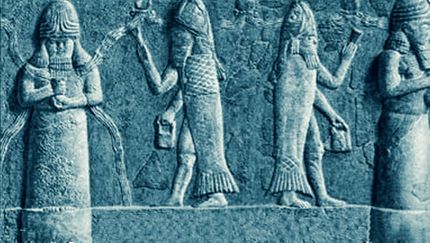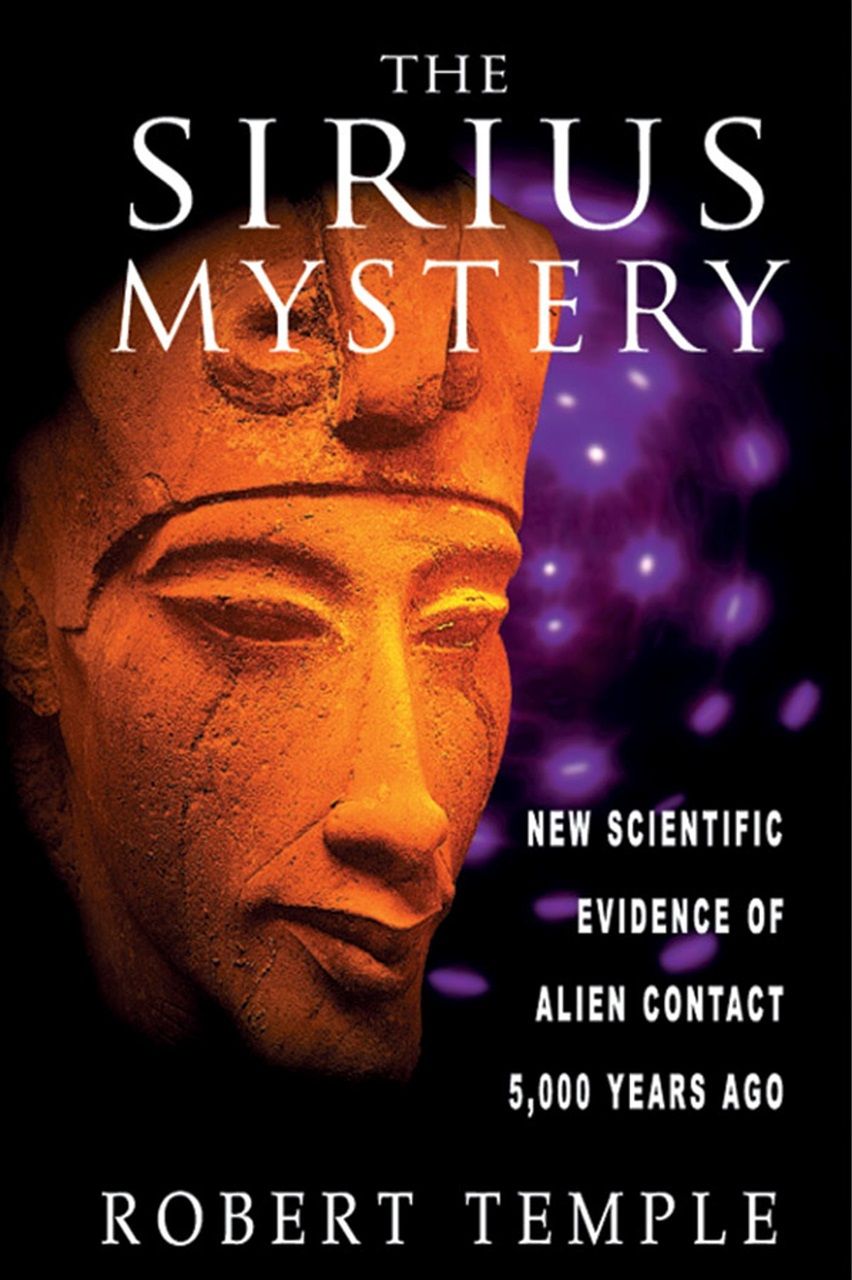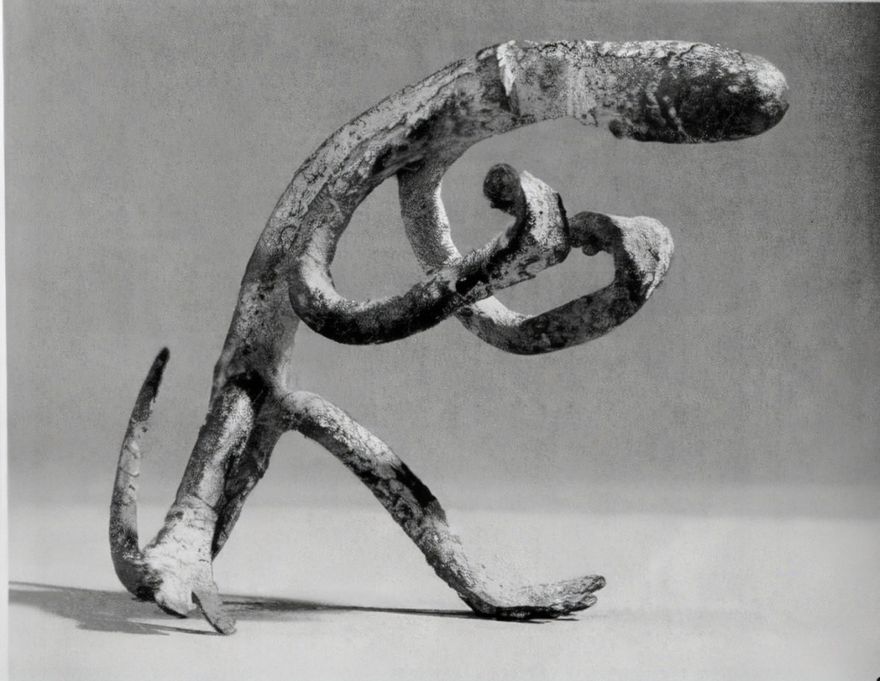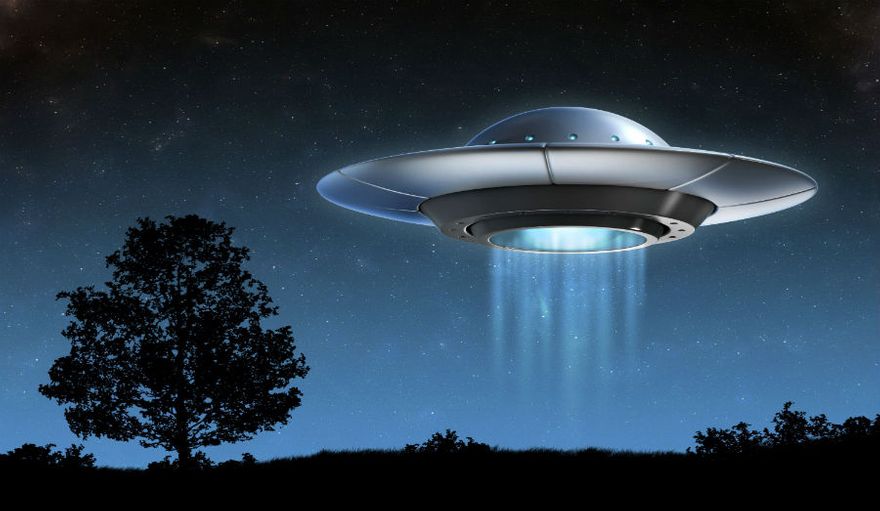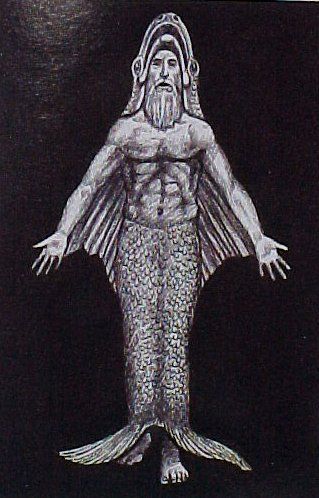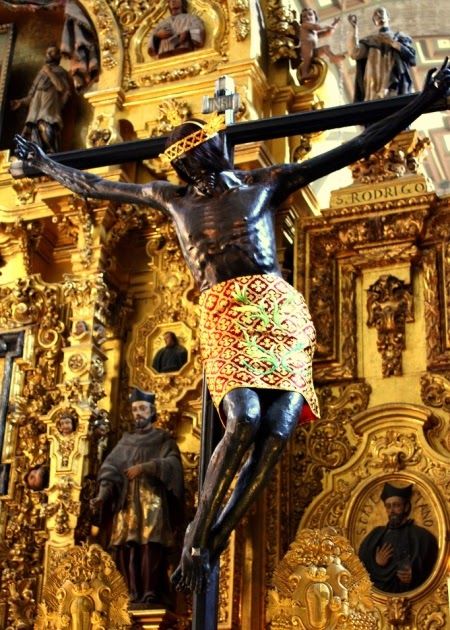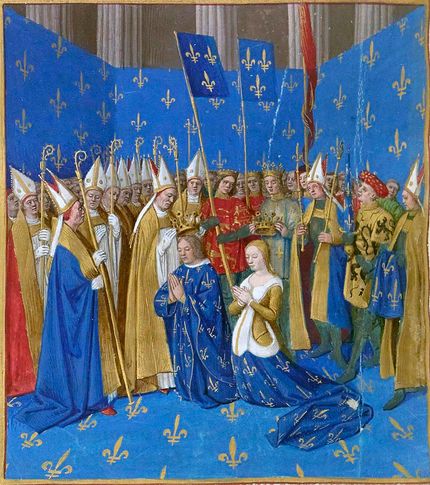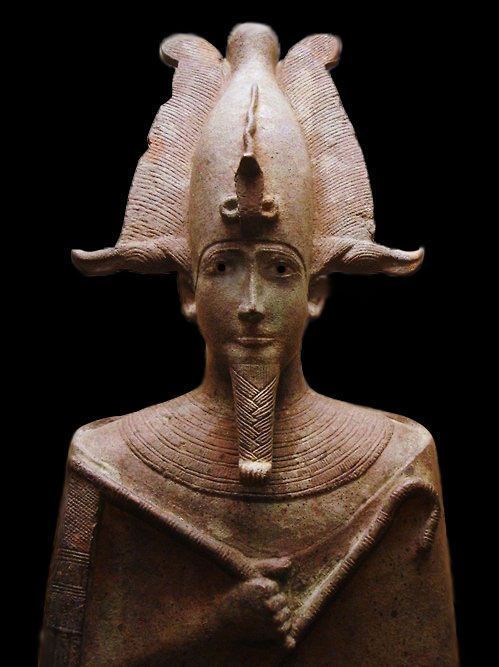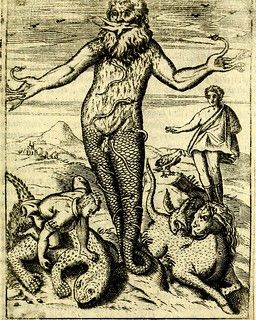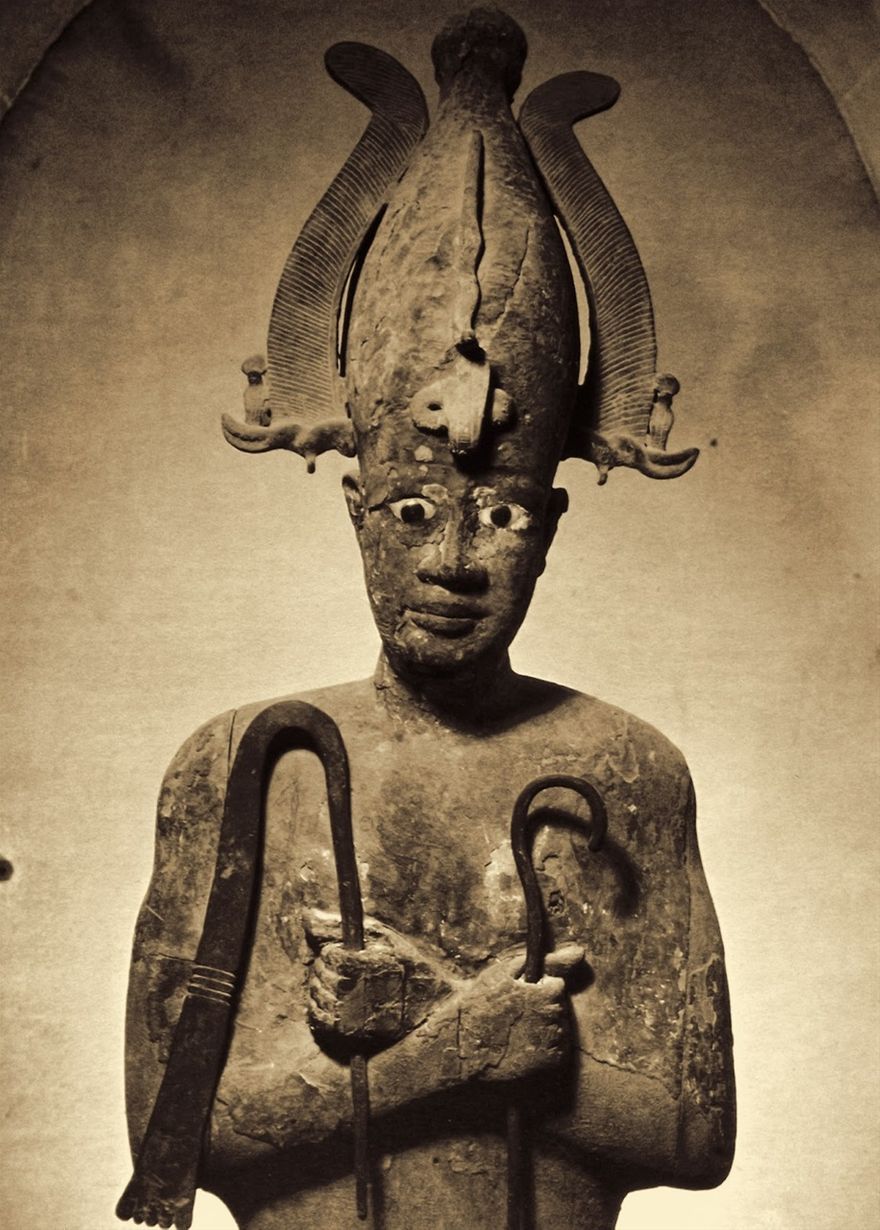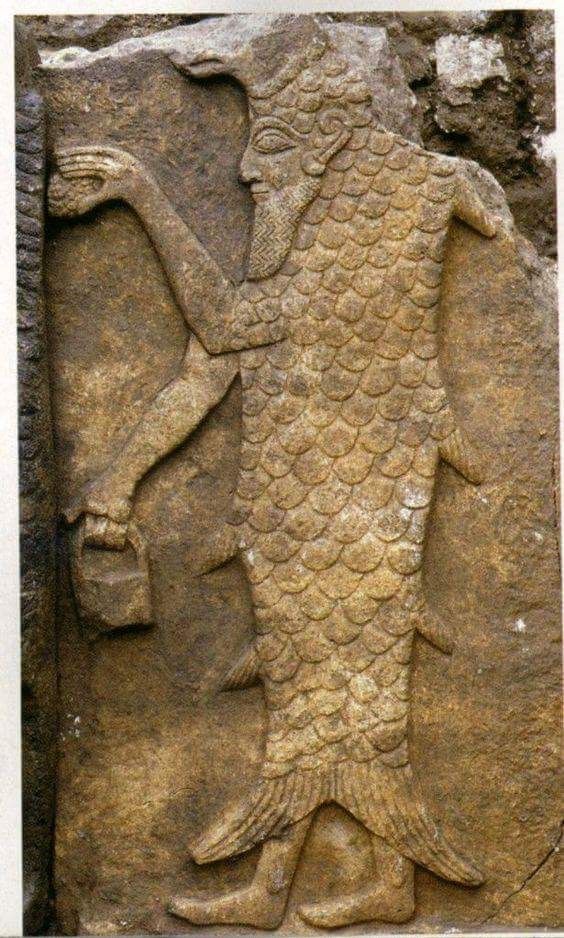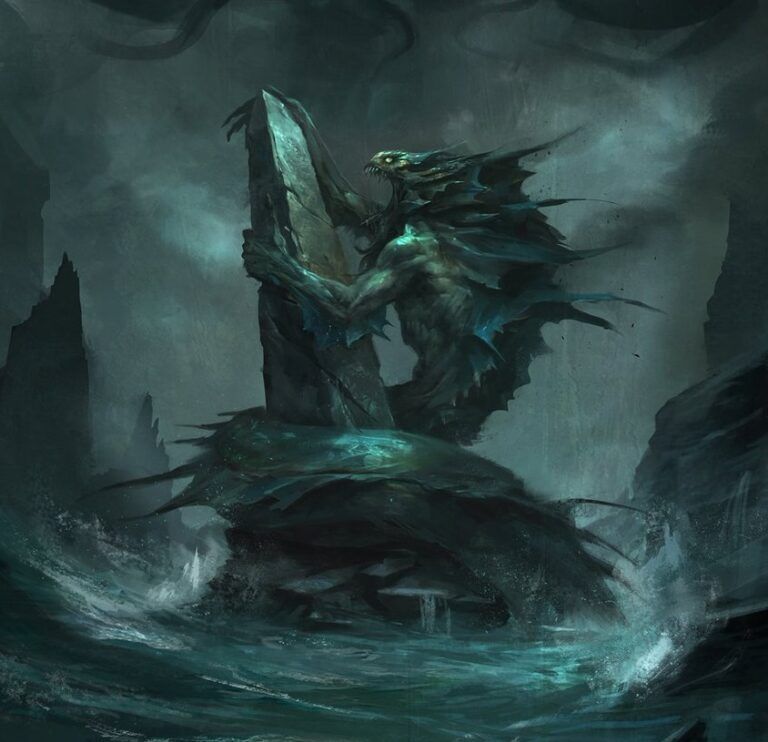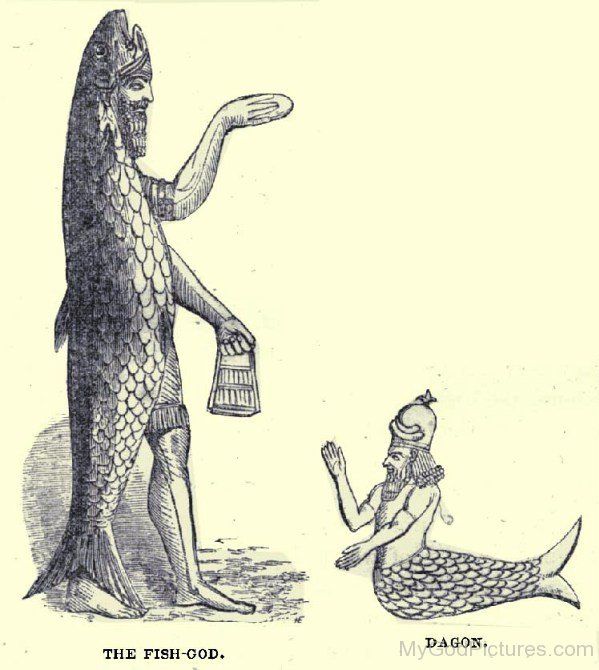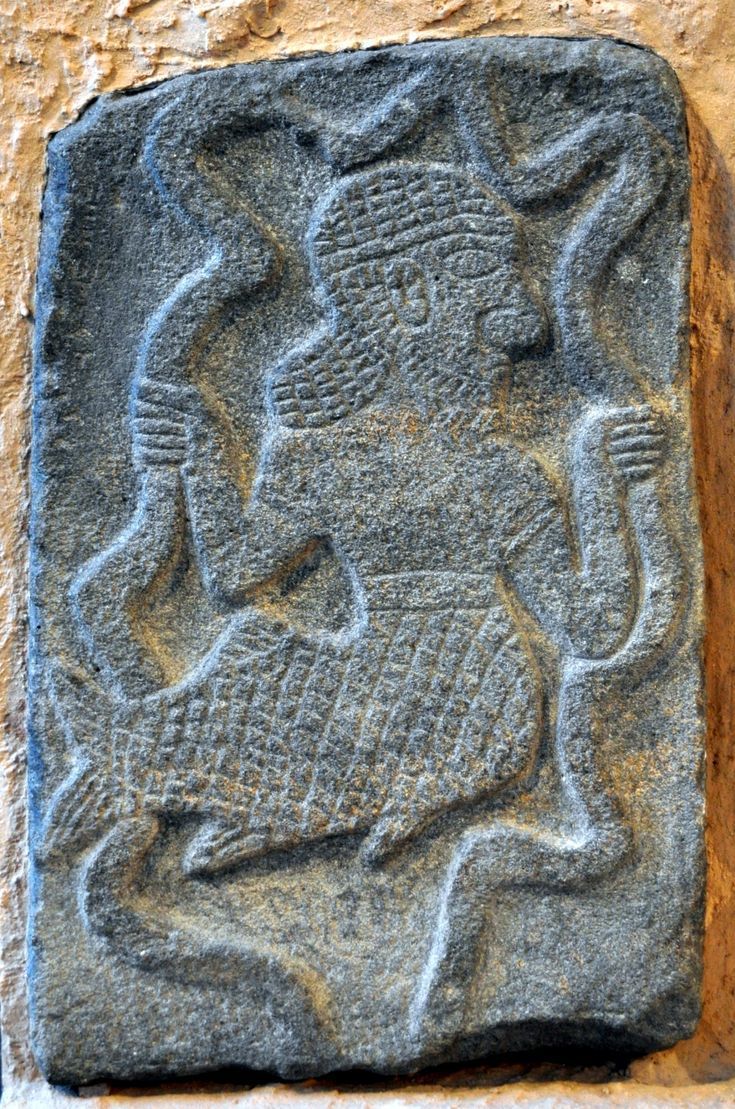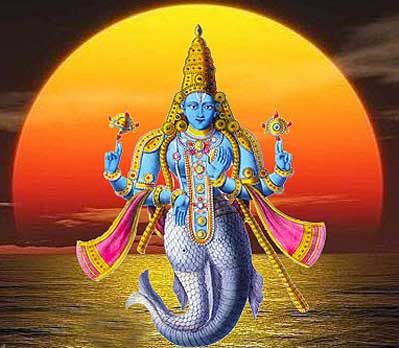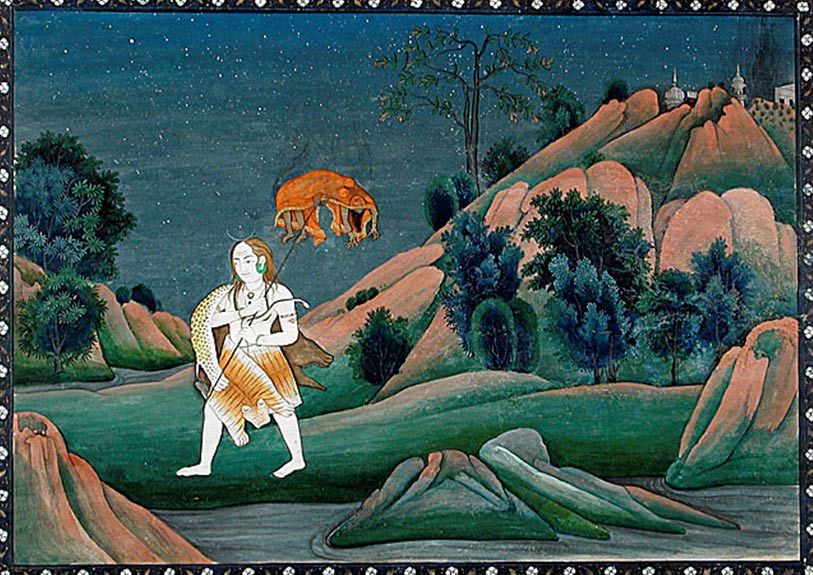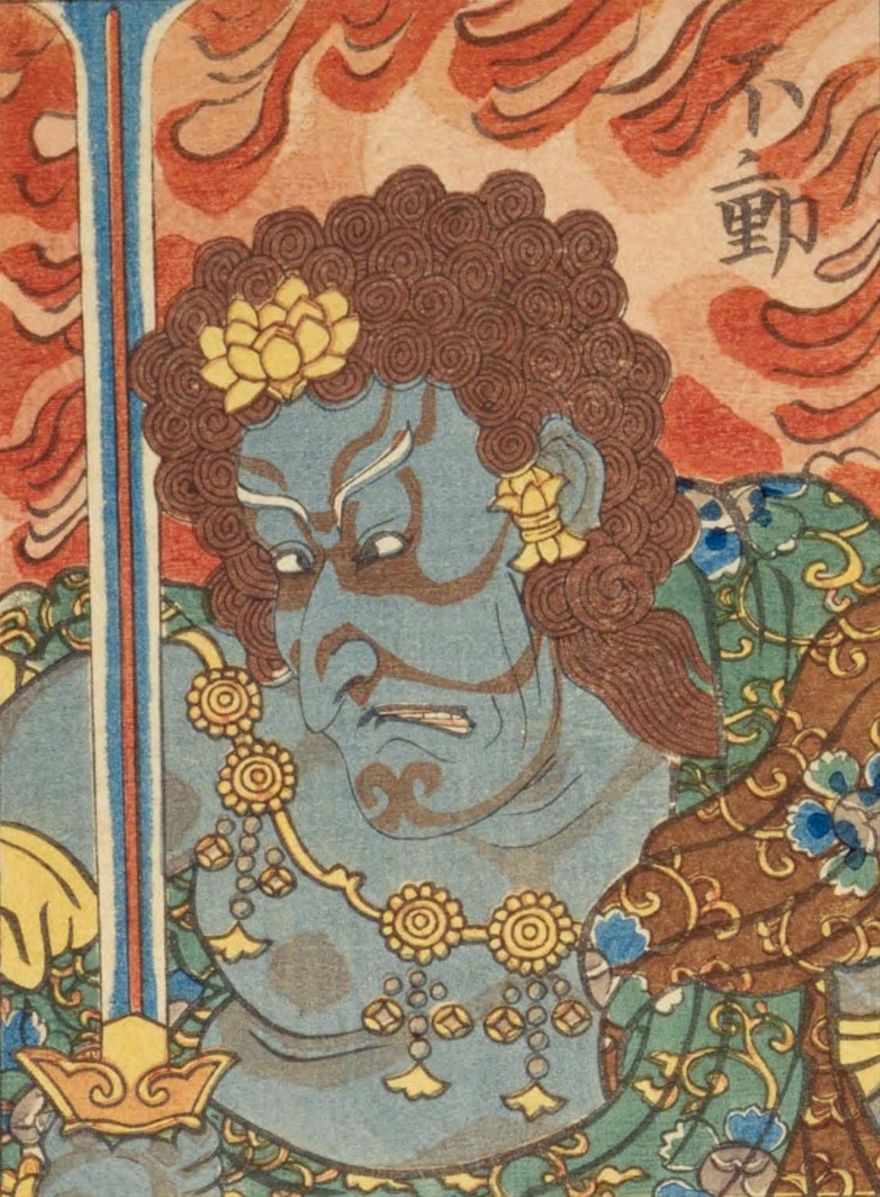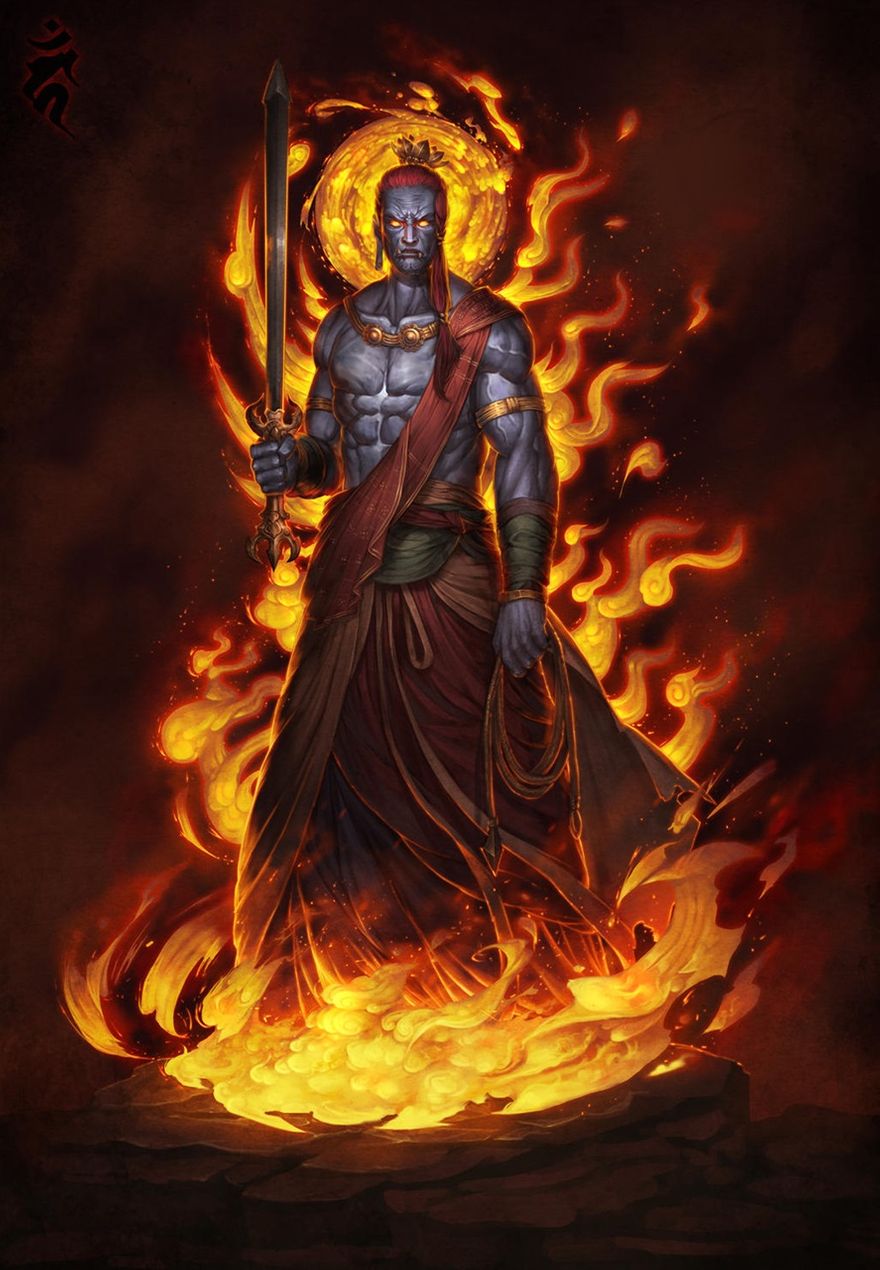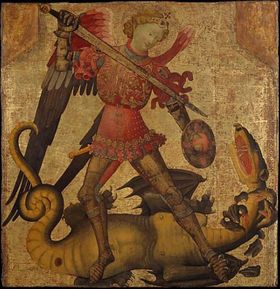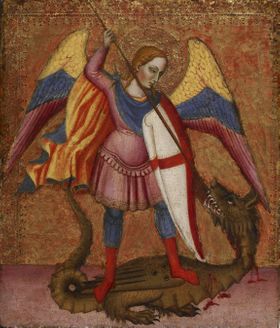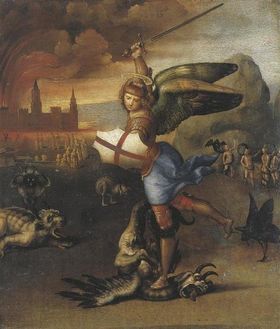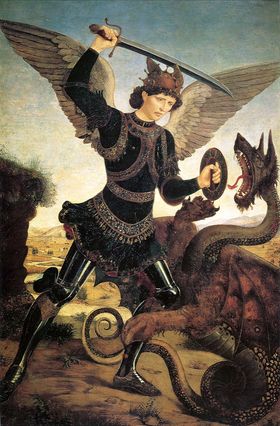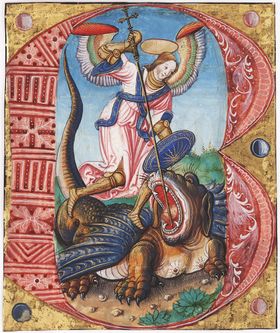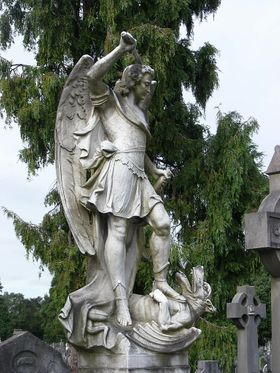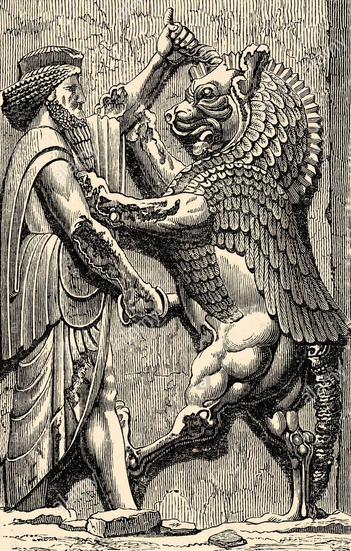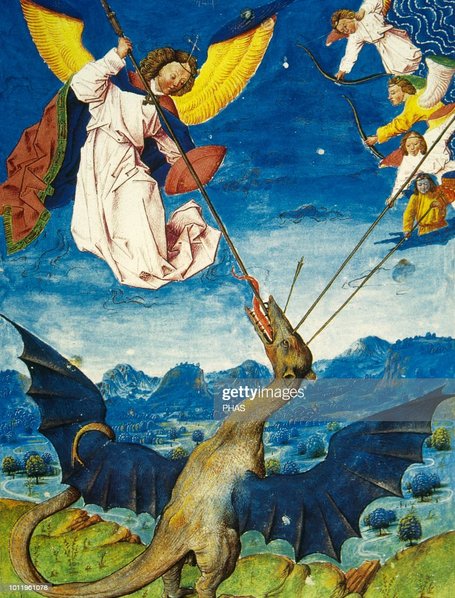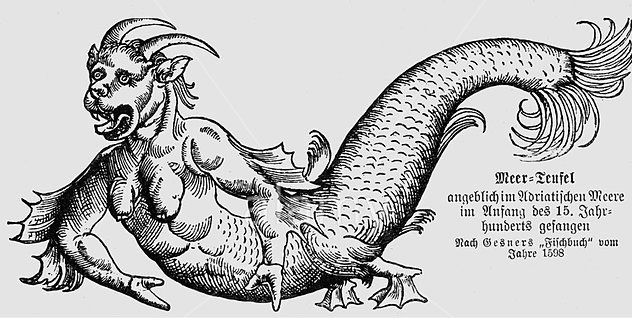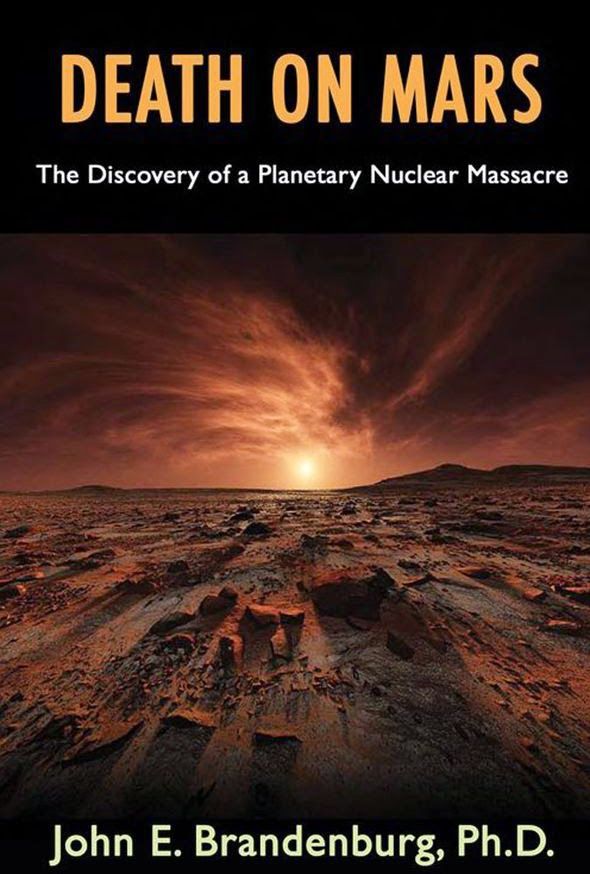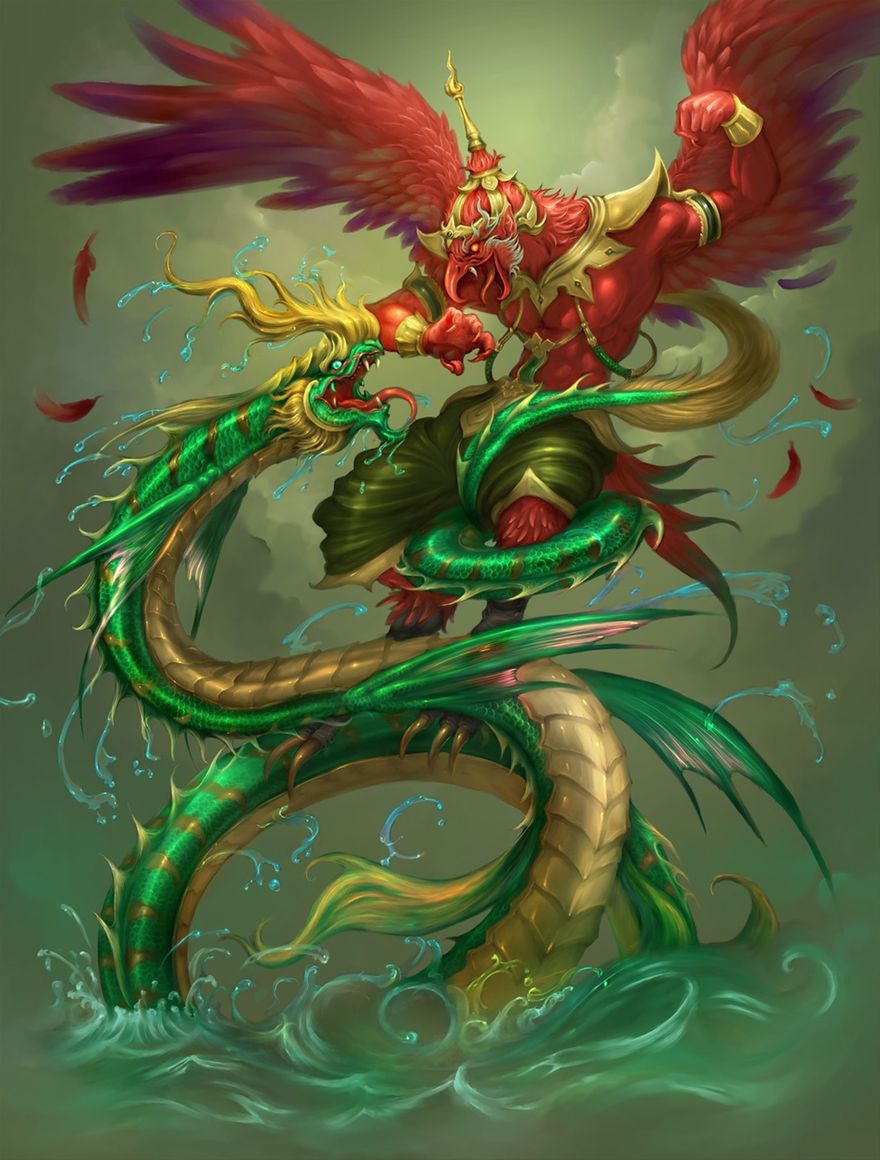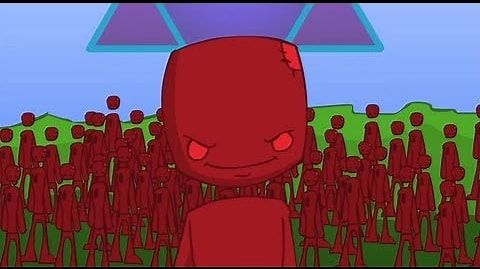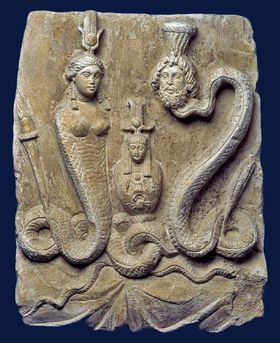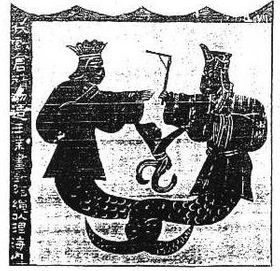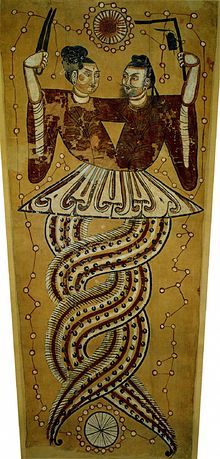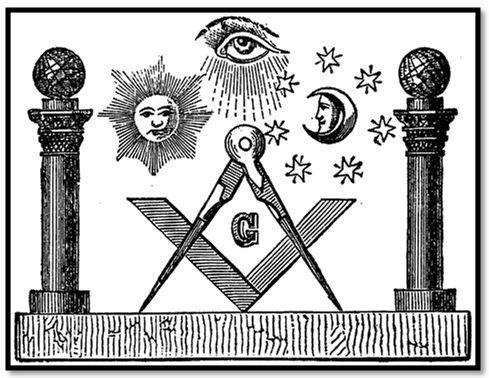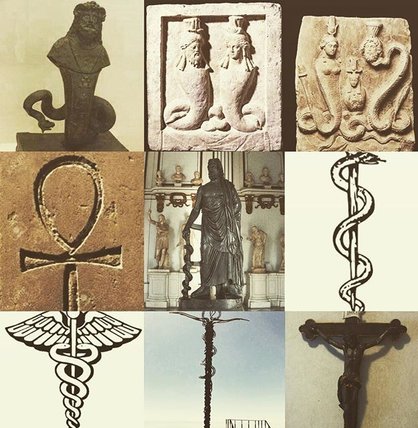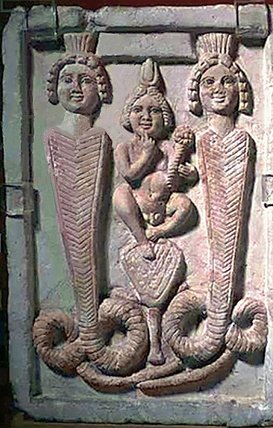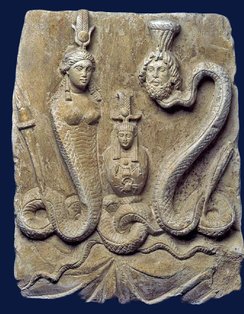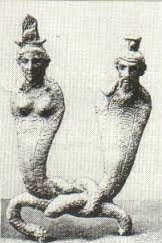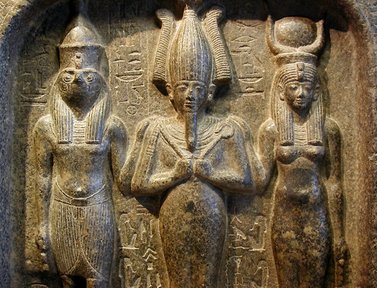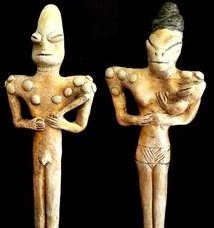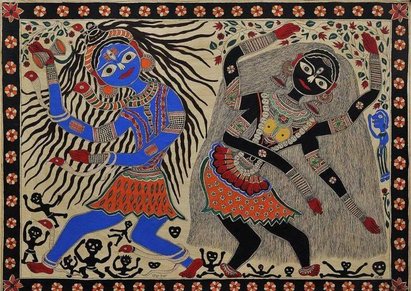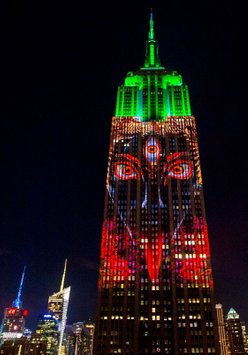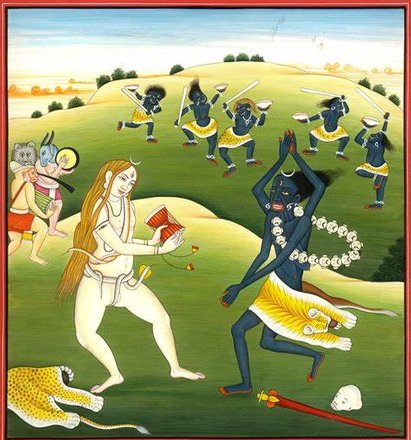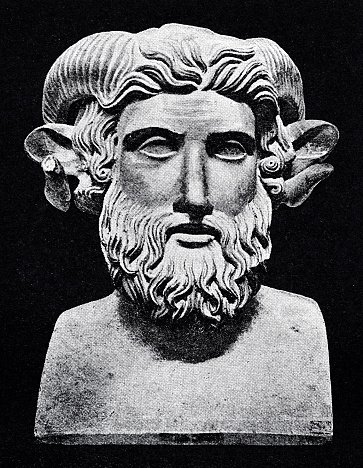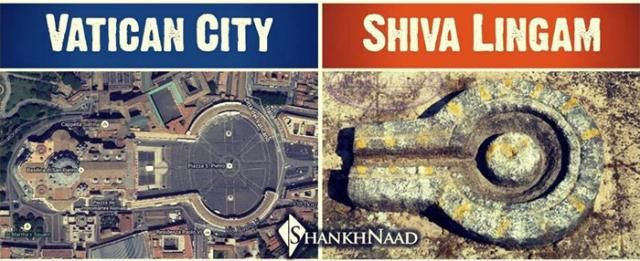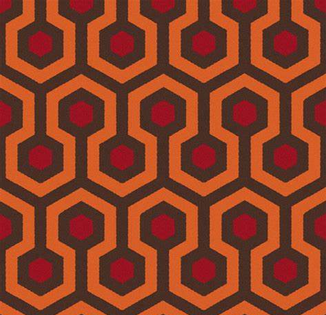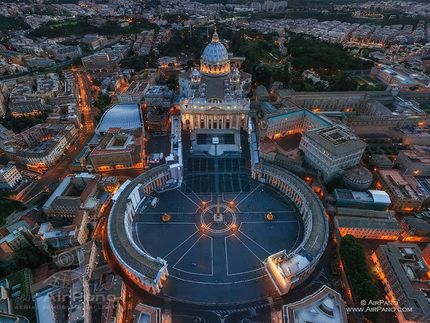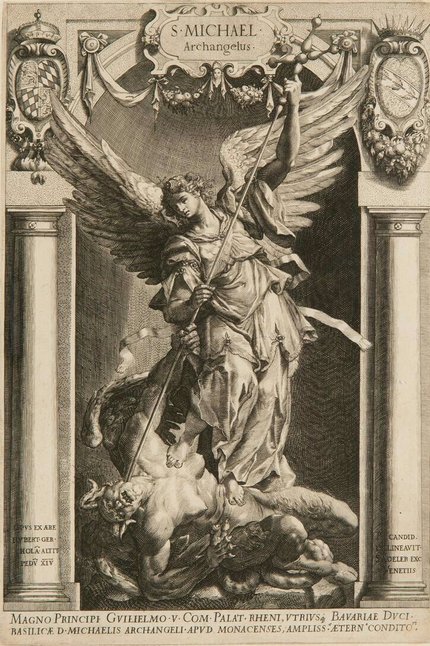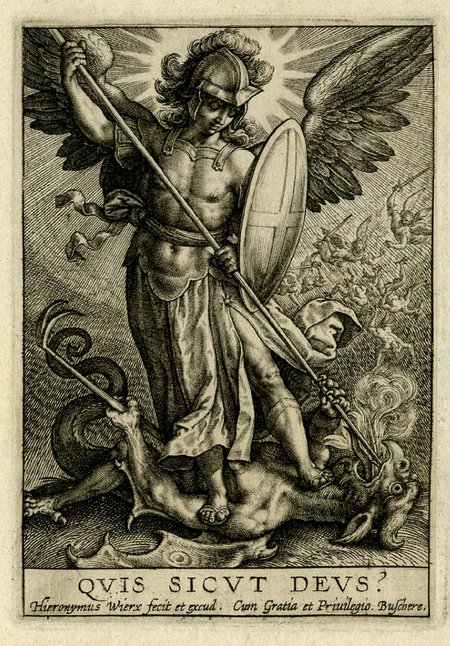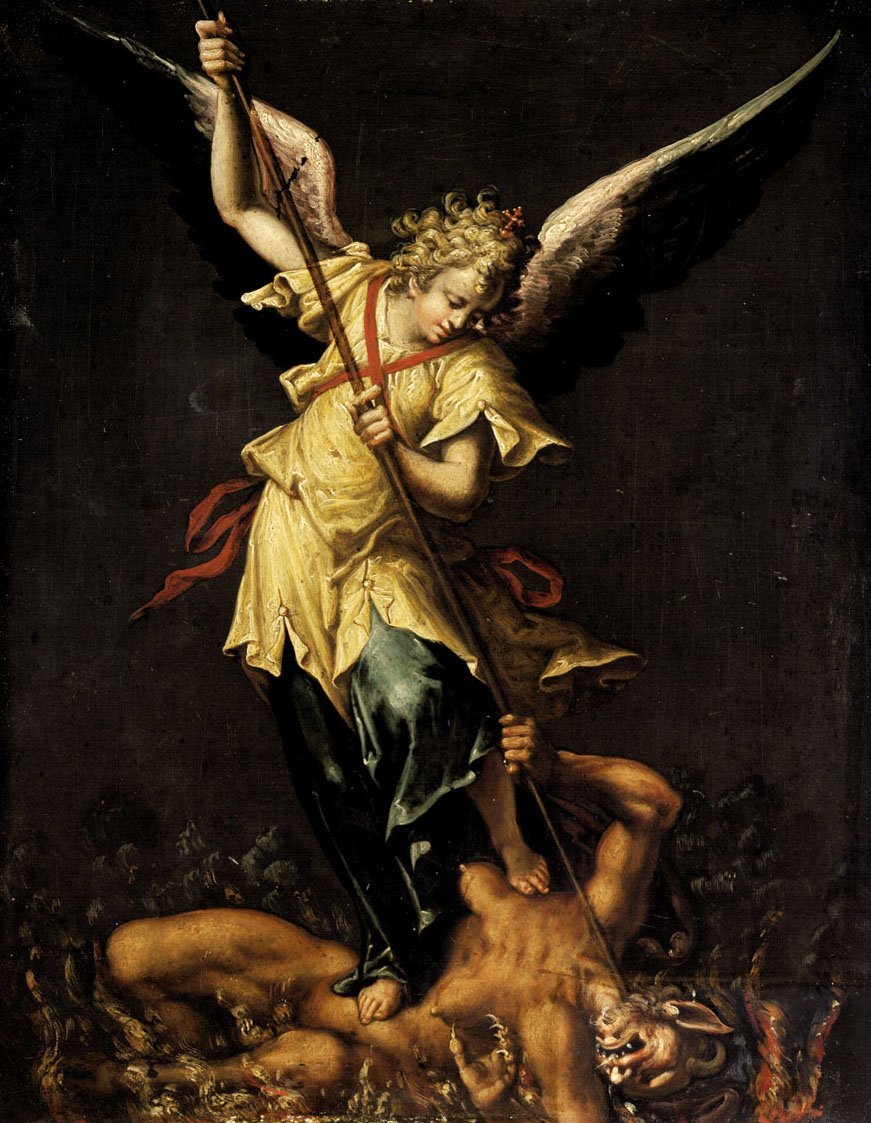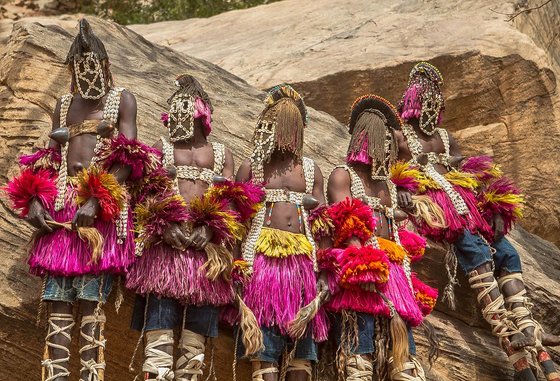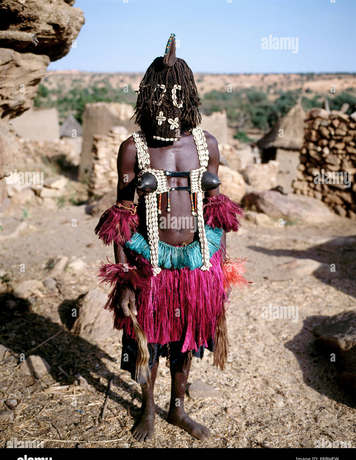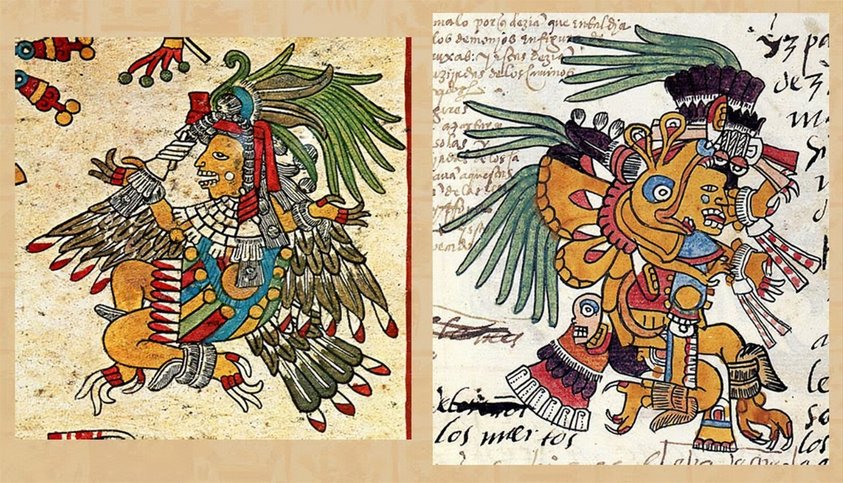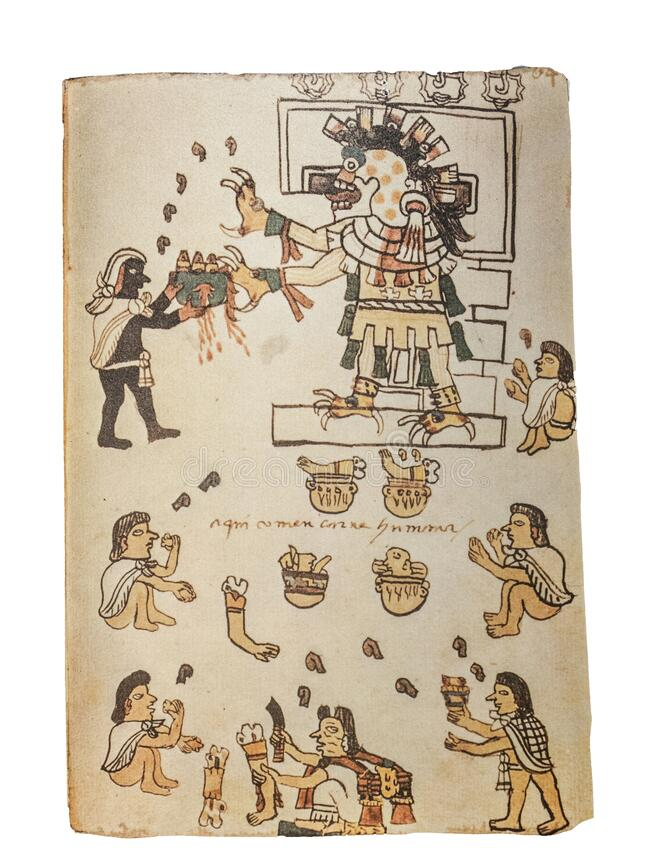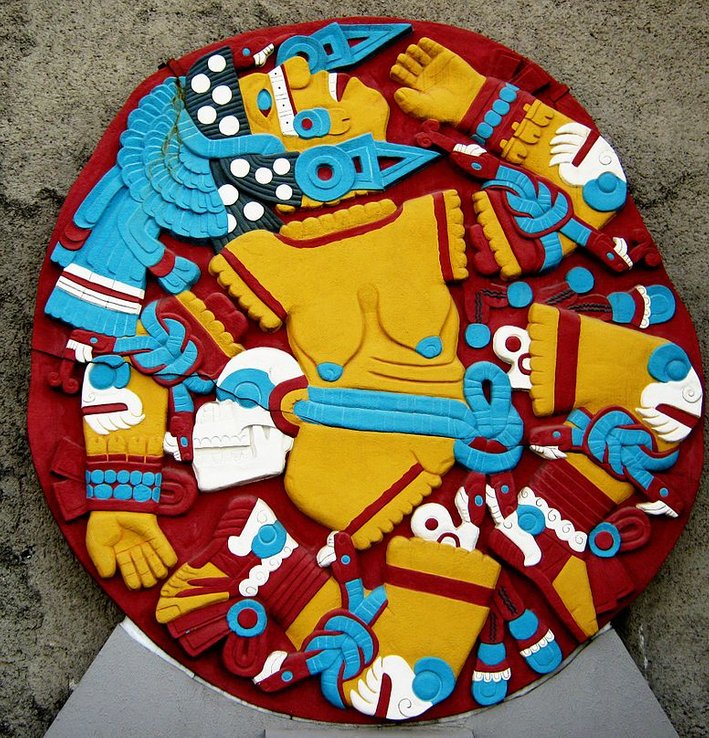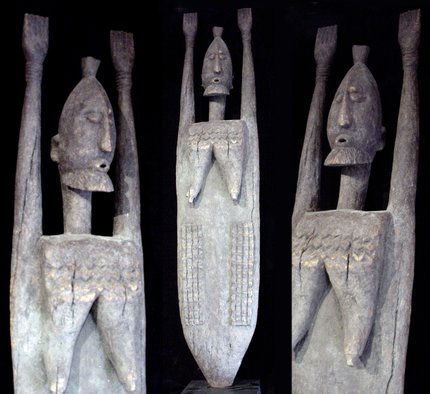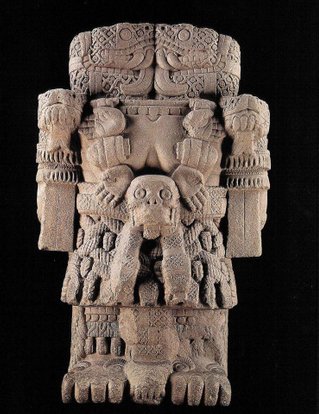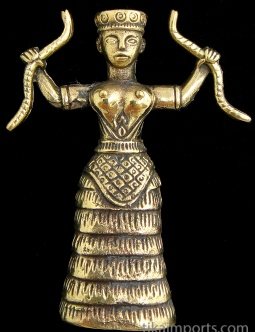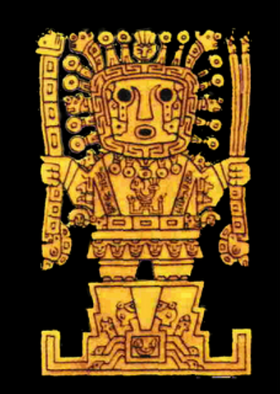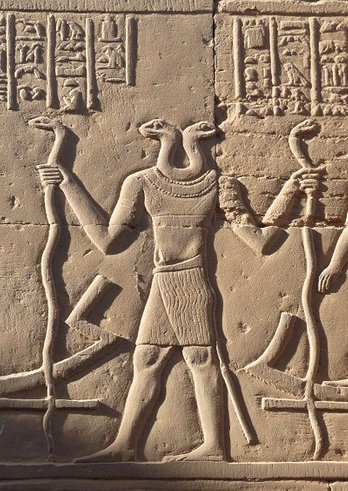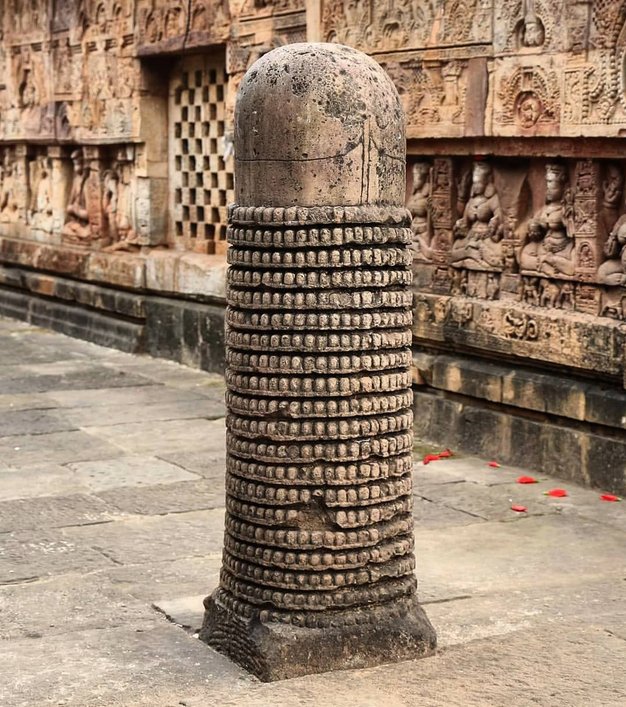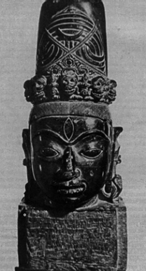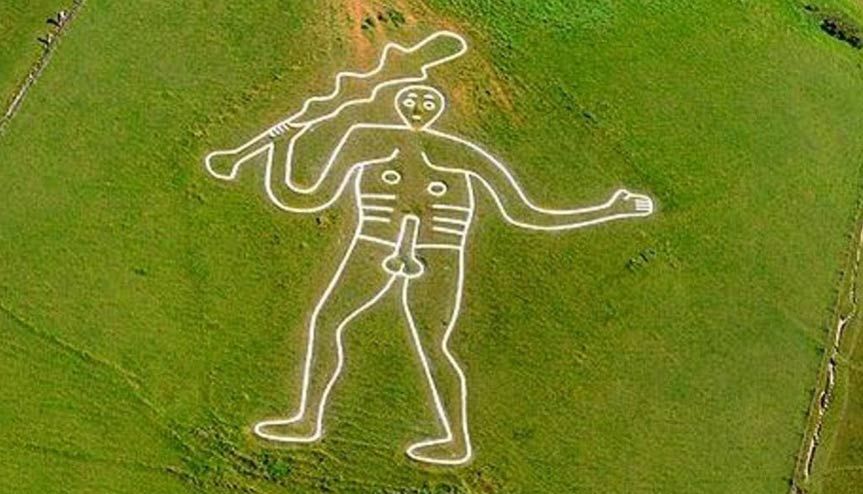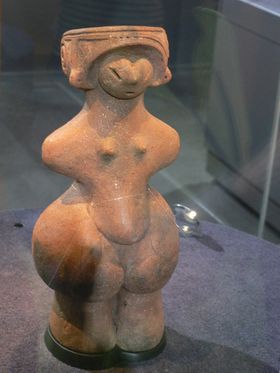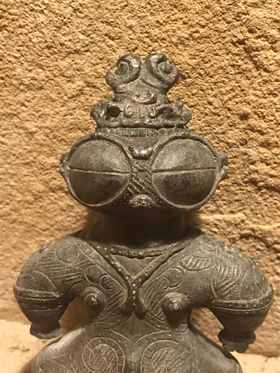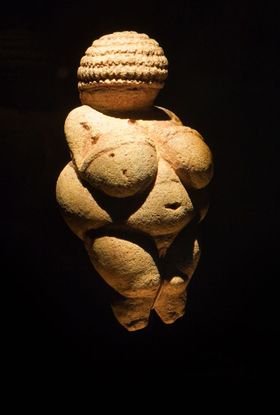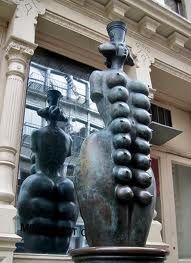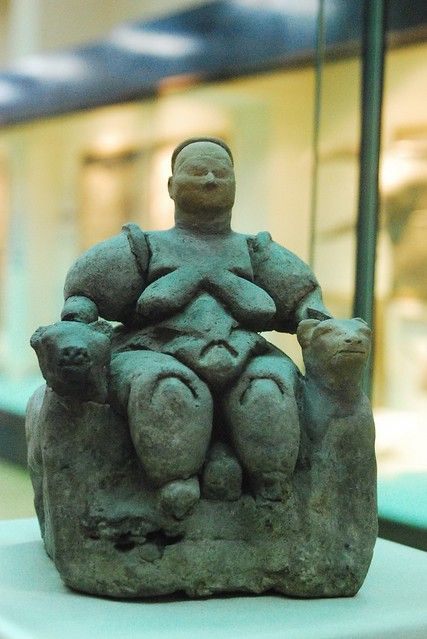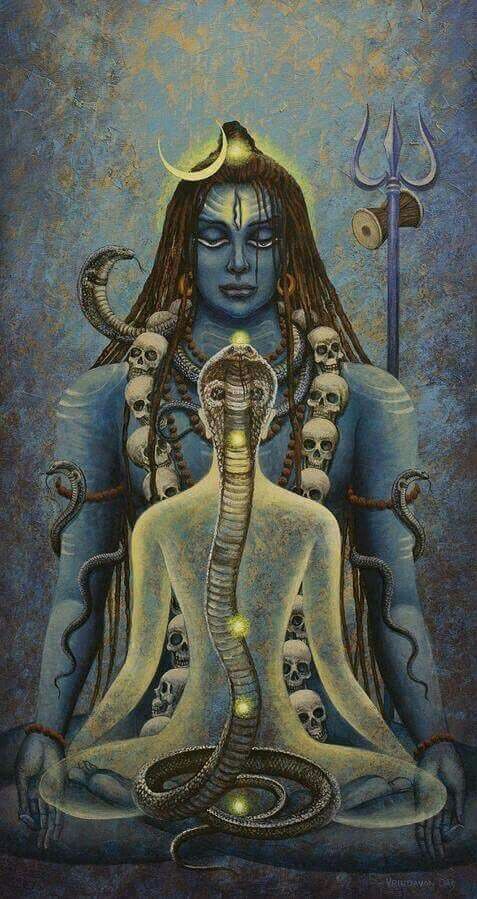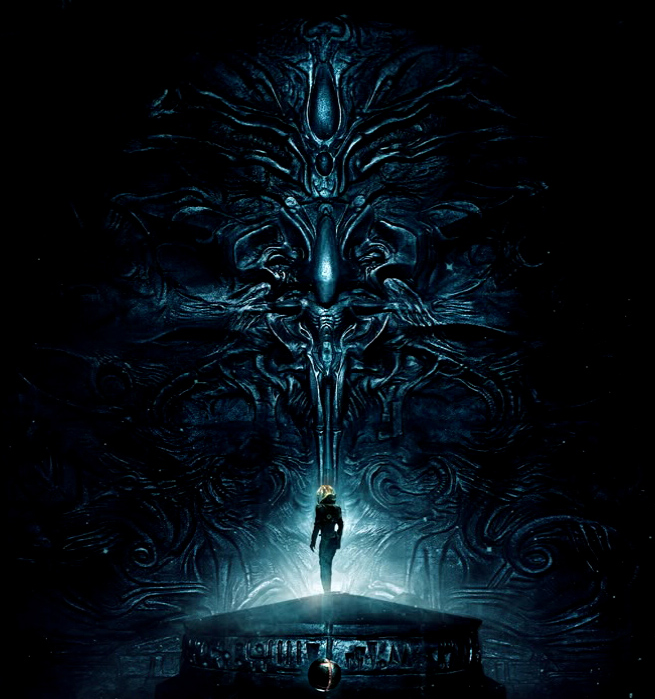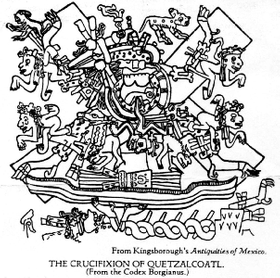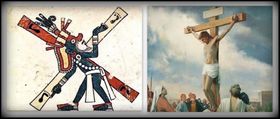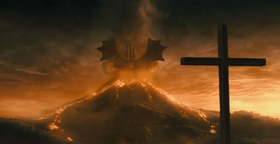Now, when I was studying the people called the "Dogons", and how they have a 60 year tradition acknowledgement on the Star "Sirius" (which consist festivals and dancing. Note: there is supposed to be Sirius A, Sirius B and Sirius C...), they state that this was based from a strange encounter of these creatures called "The Nommo". Here is what the Wiki states on these creatures:
"The Nommo or Nummo are primordial ancestral spirits in Dogon religion and cosmogony (sometimes referred to as demi deities) venerated by the Dogon people of Mali. The word Nommos is derived from a Dogon word meaning "to make one drink." "Nommos are usually described as amphibious, hermaphroditic, fish-like creatures. Folk art depictions of Nommos show creatures with humanoid upper torsos, legs/feet, and a fish-like lower torso and tail. Nommos are also referred to as “Masters of the Water”, “the Monitors”, and "the Teachers”. "Nommo can be a proper name of an individual or can refer to the group of spirits as a whole. For purposes of this article, “Nommo” refers to a specific individual and “Nommos” is used to reference the group of beings. Dogon religion and creation mythology (fr) says that Nommo was the first living creature created by the sky god Amma."
"Shortly after his creation, Nommo underwent a transformation and multiplied into four pairs of twins. One of the twins rebelled against the universal order created by Amma. To restore order to his creation, Amma sacrificed another of the Nommo progeny, whose body was dismembered and scattered throughout the universe." "This dispersal of body parts is seen by the Dogon as the source for the proliferation of Binu shrines throughout the Dogons’ traditional territory; wherever a body part fell, a shrine was erected. In the latter part of the 1940s, French anthropologists Marcel Griaule and Germaine Dieterlen (who had been working with the Dogon since 1931) wrote that they were the recipients of additional, secret mythologies, concerning the Nommo." "The Dogon reportedly related to Griaule and Dieterlen a belief that the Nommos were inhabitants of a world circling the star Sirius (see the main article on the Dogon for a discussion of their astronomical knowledge)."
"The Nommos descended from the sky in a vessel accompanied by fire and thunder. After arriving, the Nommos created a reservoir of water and subsequently dived into the water. The Dogon legends state that the Nommos required a watery environment in which to live. According to the myth related to Griaule and Dieterlen: "The Nommo divided his body among men to feed them; that is why it is also said that as the universe "had drunk of his body," the Nommo also made men drink. He gave all his life principles to human beings." The Nommo are also thought to be the origin of the first Hogon."
Now, based from Credo's account also details the same thing, as very large vessels are seen fallen from the sky. Based from his interview with David Icke, he stated that the Leader of the Chitauri would have three eyes, and a terrible claw. He states this creatures "phallus" was cut off by a warrior, to which is then replaced by a "Golden Phallus". Now, based from the story of the God that is "dismembered", should tell you that it's based on the God "Dionysus" and Osiris. And the "Phallus", of course connects him to being the God of the Pillar, who is Osiris, Shiva, Pan etc. Now, in this story, mentions the Nommo coming from the sky in "fire" and thunder, and landing here on Earth. Then states that they taught the people (Dogons) about where they came from which is based on the star "Sirius". What does this story remind you of? Yes, Credo Mutwa's story on the reptilian beings called the "Chitauri", in which came down in the same manner and taught the people on how to be gods. This is mentioned in the previous Chapter "The Lord of Sirius: Eye in the Sky".
(If you watched "The Avengers" movie, then you will see those creatures called "Chitauri", coming from Outer Space ("Sirius"?), and invading the Earth on the order from Thanos. Thanos is based on the Greco-Roman "Thanatos", and the Saturnian God "Shani", which is based on the God "Saturn")
This story on the Nommo from the Dogons, and the Chitauri are really one and the same, in which we will get to the bottom of this mystery. Now, after learning about who Dagon is in the Bible, I find this to not just be a fish deity, but a black God on the cross. This is where the name "Dogon" is based on, as this is the God Shiva/Vishnu who is Krishna the Black Buddha, to Dagon....
This is why the priest of Dagon would wear these Mitres in the form of a fish, thus worshiping the water God Baal, Moloch and Dagon. Anyway, this is where we get the true images of "Oannes" and men with fish bodies, thus leading to the coming of the religion of Christianity.
Based from the book "The Sirius Mystery" by Rober Temple details this excerpt on pg 32: "The landing of Nommo on our Earth is called 'the day of the fish',61 and the planet he came from in the Sirius system is known as the '(pure) earth of the day of the fish . . . not (our) impure earth . . ,'62 In our own solar system all the planets emerged from the placenta of our sun. This is said of the planet Jupiter,63 which 'emerged from the blood which fell on the placenta'. The planet Venus was also formed from blood which fell on the placenta."
"64 (Venus 'was blood red when she was created, her colour fading progressively'.65) Mat's, too, was created from a coagulation of 'blood'.66 Our solar system is, as we have noted, called the placenta of Ogo, the Fox, who is impure. Our own planet Earth is, significantly, 'the place where Ogo's umbilical cord was attached to his placenta . . . and recalls his first descent'.67 In other words, the Earth is where Ogo 'plugged in', as it were, to this system of planets."
"What Ogo the Fox seems to represent is man himself, an imperfect intelligent species who 'descended' or originated on this planet, which is the planet in our solar system to which the great umbilical cord is attached. Ogo is ourselves, in all our cosmic impurity. It comes as a shock to realize that we are Ogo, the imperfect, the meddler, the outcast. Ogo rebelled at his creation and remained unfinished."
"He is the equivalent of Lucifer in our own tradition in the Christian West. And in order to atone for our impurity it is said over and over by the Dogon that the Nommo dies and is resurrected, acting as a sacrifice for us, to purify and cleanse the Earth. The parallels with Christ are extraordinary, even extending to Nommo being crucified on a tree, and forming a eucharistic meal for humanity and then being resurrected."
pg33: "....We are told that the Nommo will come again. A certain 'star' in the sky will appear once more68 and will be the 'testament to the Nommo's resurrection'. When the Nommo originally landed on Earth, he 'crushed the Fox, thus marking his future domination over the Earth which the Fox had made'.69 So perhaps man's brutish nature has already been sufficiently subdued in our dis¬ tant past."
"Perhaps it was those visitors whom the Dogon call the Nommos who really did 'crush the Fox' in us, who all but destroyed Ogo, and have given us all the best elements of civilization which we possess. We remain as a curious mixture of the brute and the civilized, struggling against the Ogo within us. The Dogon seem to have come to terms with life, amid the bewildering."
Here you can see the connections of the Nommo dying and resurrection to Christ, and the cleansing for the purification of mankind. Now look at this excerpt from "The Anacalypsis" Page 309: "The MERCURY of Egypt, Teut-tat, is the same as the Gothic Thiod-tat, or query, Thiod-ad ?* Here we come, perhaps, at the origin of Qeoj. Jayadeva describes Buddha as bathing in blood, or sacrificing his life to wash away the offences of mankind, and thereby to make them partakers of the kingdom of heaven. On this the author of the Cambridge Key** says, "Can a Christian doubt that this Buddha was the type of the Saviour of the world ?" This Buddha the Cantab. supposes to have been Enoch...."
Pg 304 states this: "Let us take a look now at what the Dogon tribe have to tell us about the amphibious creatures who are credited with founding their civilization as well, and who seem to have come from Sirius. In Figures 32 and 34 are Dogon tribal drawings of what the creatures actually looked like. They are credited with having descended in an ark which, in landing, looked like Figure 35 which portrays 'the spinning or whirling of the descent of the ark'. The god of the universe, Amnia (whose name I feel certain is a survival of that of the god Ammon of the Oasis of Siwa), sent the amphibians to earth. They are called the Nommos."
"But just as the Babylonians tended to speak of Oannes, the leader, instead of always saying 'the Annedoti' collectively, the Dogon often just speak of 'Nommo' or 'the Nommo' as an individual. The Nommos are collec¬ tively called 'the Masters of the Water' and also 'the Instructors', or 'the Monitors'. They have to live in water: 'The Nommo's scat is in the water'.6"
"The Dogon describe the sound of the landing of the ark. They say the 'word' of Nommo was cast down by him in the four directions as he descended,* and it sounded like the echoing of the four large stone blocks being struck with stones by the children, according to special rhythms, in a very small cave near Lake Debo.8 Presumably a thunderous vibrating sound is what the Dogon are trying to convey. One can imagine standing in the cave and holding one's ears at the noise."
"The descent of the ark must have sounded like a jet runway at close range. The landing of the ark is visually described:9 'The ark landed on the Fox's dry land and displaced a pile of dust raised by the whirlwind it caused.' For this, see Figure 33. They continue: 'The violence of the impact roughened the ground ... it skidded on the ground.'"
"The reader will recall that near the end of Chapter One I mentioned that 'the word' represents a concept like the logos to the Dogon, for it means 'air'. We may take this description to refer not only to noise but to a rushing wind. The descriptions of the landing of the ark are extremely precise. The ark is said to have landed on the earth to the north-east of Dogon country,7 which is where the Dogon claim to have come from (originally, before going to Maude) and that is, of course, the direction of Egypt and the Middle Hast in general."
210 THE SIRIUS MYSTERY The latter is much like the Babylonian tradition of their god Ea (Enki to the Sumerians), whose seat was also in the water, and who is sometimes connected with Oannes."
"It is said of Nonimo, or more probably of his ark: 'He is like a flame that went out when he touched the earth'. They say: 'The Nonimo was "as red as fire" . . . when he landed, he became white'. 10 And consequently a bit of folk¬ lore: 'The albino is the testament on Earth of the Nommo's burns as he came down; he is said to be the "trace of the burn", the scar of the Nommo."
"11 There seems to be a use by the Dogon of 'spurting blood' to describe what we would call 'rocket exhaust'. And let us remember that, short of anti-gravity machines (which may be impossible), rocket propulsion is likely to be used by craft landing on any planet, no matter how sophisticated and non-rocket-like the interstellar main craft, or no matter how immensely advanced the civilization may be which is making a landing on a planet."
"For the principle of the rocket is a simple one unlikely to be dispensed with entirely in any foreseeable future technology. Actually, the Dogon seem to make a clear dif¬ ferentiation between the ark in which the Nommos actually landed on earth and what we may surmise was the true interstellar spaceship hovering above in the sky at a great distance, and which the Dogon seem to describe as appearing in the sky as a new star, and leaving with the Nommos at their departure from Earth."
"In fact, this is the sort of arrangement one would expect. An interstellar spaceship would probably look like a bright new star, possibly visible in daytime as well as by night, and the landing craft would be simple rocket-propelled craft not so different in principle from machines which we use at the present time for landing on the moon."
"At this point I should make it clear that I do not believe that spaceships from extraterrestrial civilizations are flitting through the skies at this moment. I am not a 'flying saucer' enthusiast. I do not believe that spacecraft would behave in the erratic fashion in which UFOs behave. It makes no sense to me that spacecraft would fly idly around making spectacles of themselves - and ambiguous spectacles at that - for years on end."
"If we went to another inhabited planet, would we waste either time or resources on such apparent nonsense? What seems to be lacking in UFOs is purpose, of any kind, which could conceivably fit into a framework of extraterrestrial visitation. So I therefore do not believe that 'flying saucers' are spacecraft, although I am willing to admit I may be wrong."
"I have encountered nothing but flak from both sides about this believers in flying saucers are incredulous that I am not one of them, since I have written a book on extraterrestrials and I even maintain that spaceships visited Earth in the past; those who do not entertain for one moment the notion that spaceships could ever have visited the Earth naturally assume that my book is about flying saucers. I should add, however, that I feel certain that the Earth is being monitored at this moment by a more advanced extraterrestrial civilization, and I assume this monitoring must be by automatic computer probes left behind in this solar system at some time in the past."
"Although I consider most so-called UFO sightings as pure hysteria or simple error, it is possible that a small percentage of UFOs may be what the devout 'believers' in UFOs claim they are. It is unfortunate that this subject has become so burdened by the oppressive enthusiasm of people whom I can only describe by the unflattering epithet of 'the lunatic fringe'."
"The Dogon may describe the interstellar spaceship hovering high above the Earth by what they call ie pelu tolo, 'star of the tenth moon'. The Dogon say: 'As (the ark) landed, the weight of the ark caused the "blood" to spurt to the sky'. 12 This would seem to be a rocket craft landing on earth. Bui this 'spurting blood' (flame ?) is said to be shared with ie pelu tolo, and 'gave the star reality and brilliance'. 13 For three different complementary tribal drawings ie pelu tolo."
"These seem to represent the 'star' in three separate conditions, differing in the amount of 'spurting blood' being emitted by the presumed spacecraft. The Dogon also describe this 'star' specifically as having a circle of reddish rays around it, and this circle of rays is 'like a spot spreading' but remaining the same size. 14 It is said that the Nommos will come again."
"There will be a 'resurrection of the Nommo'. It should thus not surprise us that 'the celestial symbol of the resurrection is the "star of the tenth moon", ie pelu tolo . . . This star is not easy to see. . . . The ten rays, placed in pairs, are inside the circle because the star has not yet "emerged"; it will be formed when the Nommo's ark descends, for it is also the resurrected Nommo's "eye" symbolically.'"
"1.5 In other words, the 'star' is not a star, and can only be seen when the Nommo returns and his ark descends to Earth. The Nommo is 'the monitor for the universe, the "father" of mankind, guardian of its spiritual principles, dispenser of rain and master of the water generally.'ld Not all the Nommos came to Earth. The 'one' called Nommo Die, or 'Great Nommo', remained 'in heaven with Ainma, and he is his vicar'. 17 He manifests himself in the rainbow, which is called 'path of the Nommo'. 18 He is guardian of the 'spiritual principles of living creatures on Earth'...."
"There are three other distinct kinds of Nommo, each personified as an individual. There is the Nommo Titiyayne, 'messenger (or deputy) of the Nommo Die ... he (executes) the latter's great works.'20 The Nommos who came to earth in the spaceship arc presumably of this class. Figures 3a and 34 represent these beings in particular. A third class of Nommos are represented by O Nommo, 'Nommo of the pond'."
"'He will be sacrificed for the purification and reorganization of the universe ... He will rise in human form and descend on Earth, in an ark, with the ancestors of men . . . then he will take on his original form, will rule from the waters and will give birth to many descendants.'21 The fourth Nommo is the naughty disrupter named Ogo, or Nommo Anagonno. 'As he was about to be finished (being created) he rebelled against his creator and introduced disorder into the universe. Eventually, he will become the Pale Fox (le Renard Pale) which is the image of his fall.'22 In many ways, the Fox resembles the Egyptian deity Set."
"The name Nommo comes from a Dogon word linked to the root nomo, 'to make one drink. It is said: 'The Nommo divided his body among men to feed them; that is why it is also said that as the universe "had drunk of his body" the Nommo also made men drink. He also gave all his life principles to human beings.'23 He was crucified on a kilena tree which also died and was resurrected."
Again, this is where "Dagon" is based on......
Now, look above the mitre of the fish God and you will see a Cross like symbol. This symbol will connect to the "Fleur de lis" or "flower" and "lily" that is shown throughout the European Monarch system. Here is a segment from the Wiki:
"The fleur-de-lis, also spelled fleur-de-lys (plural fleurs-de-lis or fleurs-de-lys),[pron 1] is a lily (in French, fleur and lis mean 'flower' and 'lily' respectively) that is used as a decorative design or symbol. The fleur-de-lis has been used in the heraldry of numerous European nations, but is particularly associated with France, notably during its monarchical period. The fleur-de-lis became "at one and the same time, religious, political, dynastic, artistic, emblematic, and symbolic," especially in French heraldry. The fleur-de-lis has been used by French royalty and throughout history to represent Catholic saints of France. In particular, the Virgin Mary and Saint Joseph are often depicted with a lily. The fleur-de-lis is represented in Unicode at U+269C ⚜ in the Miscellaneous Symbols block." Origins: "The fleur de lis is widely thought to be a stylized version of the species Iris pseudacorus, or Iris florentina. However, the lily (genus lilium, family Liliaceae) and the iris (family Iridaceae) are two different plants, phylogenetically and taxonomically unrelated. Lily (in Italian: giglio) is the name usually associated with the stylized flower in the Florentine heraldic devices. Decorative ornaments that resemble the fleur-de-lis have appeared in artwork from the earliest human civilizations."
"According to Pierre-Augustin Boissier de Sauvages, an 18th-century French naturalist and lexicographer: The old fleurs-de-lis, especially the ones found in our first kings' sceptres, have a lot less in common with ordinary lilies than the flowers called flambas [in Occitan], or irises, from which the name of our own fleur-de-lis may derive. What gives some colour of truth to this hypothesis that we already put forth, is the fact that the French or Franks, before entering Gaul itself, lived for a long time around the river named Lys in the Flanders. Nowadays, this river is still bordered with an exceptional number of irises —as many plants grow for centuries in the same places—: these irises have yellow flowers, which is not a typical feature of lilies but fleurs-de-lis."
"It was thus understandable that our kings, having to choose a symbolic image for what later became a coat of arms, set their minds on the iris, a flower that was common around their homes, and is also as beautiful as it was remarkable. They called it, in short, the fleur-de-lis, instead of the flower of the river of lis. This flower, or iris, looks like our fleur-de-lis not just because of its yellow colour but also because of its shape: of the six petals, or leaves, that it has, three of them are alternatively straight and meet at their tops. The other three on the opposite, bend down so that the middle one seems to make one with the stalk and only the two ones facing out from left and right can clearly be seen, which is again similar with our fleurs-de-lis, that is to say exclusively the one from the river Luts whose white petals bend down too when the flower blooms."
"The heraldist François Velde is known to have expressed the same opinion: However, a hypothesis ventured in the 17th c. sounds very plausible to me. One species of wild iris, the Iris pseudacorus, yellow flag in English, is yellow and grows in marshes (cf. the azure field, for water). Its name in German is Lieschblume (also gelbe Schwertlilie), but Liesch was also spelled Lies and Leys in the Middle Ages. It is easy to imagine that, in Northern France, the Lieschblume would have been called 'fleur-de-lis'. This would explain the name and the formal origin of the design, as a stylized yellow flag. There is a fanciful legend about Clovis which links the yellow flag explicitly with the French coat of arms. Sauvages' hypothesis seems to be supported by the archaic English spelling fleur-de-luce and by the Luts's variant name Lits." Alternative derivations: "Another (debated) hypothesis is that the symbol derives from the Frankish Angon."
"Note that the angon, or sting, was a typical Frankish throwing spear. A possibly derived symbol of Frankish royalty was the bee, of similar shape, as found in the burial of Childric I, whose royal see of power over the Salian Franks was based over the valley of the Lys. Other imaginative explanations include the shape having been developed from the image of a dove descending, which is the symbol of the Holy Ghost. Another heraldic tradition, going back to at least the 17th century, identifies the emblem of the Childric as a frog or toad (crapaud) rather than a bee. Antoine Court de Gébelin writing in 1781 identified the toad as the emblem of the Ripuarian Franks, representing their origin from the marshlands."
"Astonishingly, it is thought that the Bee was the precursor to the Fleur-de-lys; the national emblem of France to this day. The theory is supported by many, including the French physician, antiquary and archaeologist Jean-Jacques Chifflet. In fact Louis XII, the 35th King of France, was known as ‘the father of the pope’ and featured a Beehive in his Coat of Arms. Disappointingly, his efforts to have the Bee adopted as the Republic's official emblem were rejected by the National Convention due to their belief that “Bees have Queens”. Nevertheless, the Bee remained a prominent element of French culture throughout the First and Second Empire (1804 to 1814, and 1852–1870) due to the enthusiastic patronage it had previously received." - by ANDREW GOUGH August 2008
After understanding the connections of the Gods and the religion of Christianity, it's no wonder why people want to hide the real truth on where these symbols came from. Christianity is the religion of Dagon....
Now we go to pg 94 and 95 "...The Trismegistic literature may be Neoplatonic. But that does not make what it has to say about Egyptian religion any less valid per se than the 'Isis and Osiris' by the Greek Plutarch, who was only slightly earlier in time than the Neoplatonist Greeks. It is time for scholars to pay some attention to this sadly neglected material. Much of the Trismegistic literature probably goes back to genuine sources or compilations such as Manetho's lost Sothis."
"Or the literature may be quite ancient, in which case some of it cannot, in its present form, be earlier than the Ptolemaic period when the Zodiac as we know it was Introduced into Egypt by the Greeks who in turn had it from Babylon. (I cannot here discuss the matter of earlier forms of zodiac, such as at Denderah.) Mead quotes an Egyptian magic papyrus, this being an uncontested Egyptian document which he compares to a passage in the Trismegistic literature: 'I invoke thee, Lady Isis, with whom the Good Daimon doth unite, He who is Lord in the perfect black.'"
"We know that Isis is identified with Sirius A, and here we may have a description of her star-companion 'who is Lord in the perfect black', namely the invisible companion with whom she is united, Sirius B."
"Mead, of course, had no inkling of the Sirius question. But he cited this magic papyrus in order to shed comparative light on some extraordinary passages in a Trismegistic treatise he translated which has the title 'The Virgin of the World'. In his comments on the magic papyrus Mead says: 'It is natural to make the Agathodaimon ("the Good Daimon") of the Papyrus refer to Osiris; for indeed it is one of his most frequent designations. Moreover, it is precisely Osiris who is pre-eminently connected with the so-called "under¬ world", the unseen world, the "mysterious dark". He is lord there . . . and indeed one of the ancient mystery-sayings was precisely, "Osiris is a dark God."
'The Virgin of the World' is an extraordinary Trismegistic treatise in the form of a dialogue between the hierophant (high priest) as spokesman for Isis and the neophyte who represents Homs." "Thus the priest instructing the initiate is portrayed as Isis instructing her son Homs. The treatise begins by claiming it is 'her holiest discourse' which 'so speaking Isis doth pour forth'. There is, throughout, a strong emphasis on the hierarchical principle of lower and higher beings in the universe - that earthly mortals are presided over at intervals by other, higher, beings who interfere in Earth's affairs when things here become hopeless, etc. Isis says in the treatise: 'It needs must, therefore, be the less should give place to the greater mysteries.' What she is to disclose to Homs is a great mystery. Mead describes it as the mystery practised by the arcli-hierophant."
"It was the degree (here 'degree' is in the sense of 'degree' in the Masonic 'mysteries', which are hopelessly garbled and watered-down versions of genuine mysteries of earlier times) 'called the "Dark Mystery" or "Black Rite". It was a rite performed only for those who were judged worthy of it after long probation in lower degrees, something of a far more sacred character, apparently, than the instruction in the mysteries enacted in the light."
"Mead adds: 'I would suggest, therefore, that we have here a reference to the most esoteric institution of the Isiac tradition . . .', Isiac meaning of course 'Isis-tradition', and not to be confused with the Book of Isaiah in the Bible (so that perhaps it is best for us not to use the word-form 'Isiacj. It is in attempting to explain the mysterious 'Black Rite' of Isis at the highest degree of the Egyptian mysteries that Mead cited the magic papyrus which I have already quoted."
"He explains the 'Black Rite' as being connected with Osiris being a 'dark god' who is 'Lord of the perfect black' which is 'the unseen world, the mysterious black'." "This treatise 'The Virgin of the World' describes a personage called Hermes who seems to represent a race of beings who taught earthly mankind the arts of civilization after which: 'And thus, with charge unto his kinsmen of the Gods to keep sure watch, he mounted to the Stars'."
"According to this treatise mankind have been a troublesome lot requiring scrutiny and, at rare intervals of crisis, intervention. After Hermes left Earth to return to the stars there was or were in Egypt someone or some people designated as 'Tat' (Thoth) who were initiates into the celestial mysteries...."
Pg 105 and 106: "....Actually, Anubis and Osiris were sometimes identified with one another. Osiris, the companion of Isis who is sometimes 'the companion of Sirius' is also sometimes identified with the orbit of the companion of Sirius, and this is reasonable and to be expected. Isis-as-Sirius was customarily portrayed by the ancient Egyptians in their paintings as travelling with two companions in the same celestial boat."
"And as we know, Sirius does, according to some astronomers, have two companions, Sirius B and Sirius G. To the Arabs, a companion-star to Sirius (in the same constellation of the Great Dog) was named 'Weight' and was supposed to be extremely heavy - almost too heavy to rise over the horizon. 'Ideler calls this an astonishing star-name/ we are told, not surprisingly. The true companion-star of Sirius, Sirius B, is made of super-dense matter which is heavier than any normal matter in the universe and the weight of this tiny star is the same as that of a gigantic normal star. The Dogon also, as we know, say that Sirius B is 'heavy' and they speak of its 'weight'."
"The Arabs also applied the name 'Weight' to the star Canopus in the constellation Aigo. The Aigo was a ship in mythology which carried Danaos and his fifty daughters to Rhodes. The Argo had fifty oarsmen under Jason, called Argonauts. There were fifty oars to the Aigo, each with its oarsman-Argonaut. The divine oarsman was an ancient Mediterranean motif with sacred meanings. The orbit of Sirius B around Sirius A takes fifty years, which may be related to the use of the number fifty to describe aspects of the Argo. There are many divine names and other points in common between ancient Egypt and ancient Sumer (Babylonia). The Sumerians seem to have called Egypt by the name of 'Magan' and to have been in contact with it."
"The chief god of Sumer, named Anu, was pictured as a jackal, which is a variation of the dog motif and was used also in Egypt for Anubis, the dog and the jackal apparently being interchangeable as symbols. The Egyptian form of the name Anubis is 'Anpu' and and is similar to the Sumerian 'Anu', and both are jackal-gods. The famous Egyptologist Wallis Budge was convinced that Sumer and Egypt both derived their own cultures from a common source which was 'exceedingly ancient'. Anu is also called An (a variation) by the Sumerians." "In Egypt Osiris is called An also. Remembering that Plutarch said that Anubis (Anpu in Egyptian) was a circle, it is interesting to note that in Sanskrit the word Anda means 'ellipse'. This may be a coincidence."
"Wallis Budge says that Anubis represents time. The combined meanings of 'time' and 'circle' for Anubis bint strongly at 'circular motion'. The worship of Anubis was a secret mystery religion restricted to initiates (and we thus do not know its content). Plutarch, who writes of Anubis, was an initiate of several mystery religions, and there is reason to believe bis information was from well-informed sources. (Plutarch himself was a Greek living under the Roman Empire.) A variant translation of Plutarch's description of Anubis is that Anubis was 'a combined relation' between Isis and Nephthys."
"This has overtones which help in thinking of 'the circle' as an orbit - a 'combined relation' between the star orbiting and the star orbited. The Egyptians used the name Horns to describe 'the power which is assigned to direct the revolution of the sun ' according to Plutarch. Thus the Egyptians conceived of and named such specific dynamics - an essential point."
A FAIRYTALE 81: "Plutarch says Anubis guarded like a dog and attended on Isis. This fact, plus Anubis being 'time', and 'a circle' suggests even more an orbital concept - the ideal form of attendance of the prowling guard dog. Aristotle's friend Eudoxus (who visited Egypt) said that the Egyptians had a tradition that Zeus (chief god of the Greeks whose name is used by Eudoxus to refer to his Egyptian equivalent, which leaves us wondering which Egyptian god is meant - presumably Osiris) could not walk because 'his legs were grown together'."
"This sounds like an amphibious creature with a tail for swimming instead of legs for walking. It is like the semi¬ divine creature Oannes, reputed to have brought civilization to the Sumerians, who was amphibious, had a tail instead of legs, and retired to the sea at night."
"...An Egyptian papyrus says the companion of Isis is 'Lord in the perfect black'. This sounds like the invisible Sirius B. Isis's companion Osiris 'is a dark god'. The Trismegistic treatise The Virgin of the World' from Egypt refers to 'the Black Rite 1 , connected with the 'black' Osiris, as the highest degree of secret initiation pos¬ sible in the ancient Egyptian religion - it is the ultimate secret of the mysteries of Isis. This treatise says Hermes came to earth to teach men civilization and then again 'mounted to the stars', going back to his home and leaving behind the mystery religion of Egypt with its celestial secrets which were some day to be decoded."
"There is evidence that the Black Rite' did deal with astronomical matters. Hence the Black Rite concerned astronomical matters, the black Osiris, and Isis. The evidence mounts that it may thus have concerned the existence of Sirius B...."
Pg 127: "...In later times the god Marduk usurped the central position of the pantheon from all the other gods in Babylon. The Enuma elish is largely a description of this process and is basically written to Marduk, telling of his honours. This was quite an innovation, a real centralization of power. 'The black-headed people', which is how the Sumerians usually referred to themselves in their writings (when the context is sufficiently pious they meekly call themselves 'the beclouded'; it is also interesting to note that the Egyptians were known as 'the melampodes' or 'the black-footed people' to the Greeks!) obviously didn't take to the rise of Marduk with unanimous acclaim. In many ways the Enuma elish is a blatant propaganda tract for Marduk, alternately trying to convert and to denounce the people."
"Here we see the author trying to woo them: 16 Let his sovereignty be surpassing having no rival. May he shepherd the black-headed ones, his creatures. To the end of days, without forgetting, let them acclaim his ways. Here, however, we see a more authoritarian approach, where the sugary smile dissolves: May he order the black-headed to re[vere him], But the next moment, compromise comes again in the form of a mock- tolerance: "Without fail let them support their gods! Their lands let them improve, build their shrines, Let the black-headed people wait on their gods. In other words, the author despairs and goes into a sulk. For his next words indicate the sentiment, 'We don't need them, we'll go it alone': As for us, by however many names we pronounce it, he is our god! Let us then proclaim his fifty names!"
Pg 131: "...THE SACRED FIFTY: "Sirius B moves in heaven with ordered motion and period, has less light than our sun, and distinctly weaves a web with its rapid motion, since it revolves round Sirius A in much less time than the planets Uranus, Neptune, and Pluto revolve around our own sun. 'Night' may thus refer to Sirius B, just as may 'black Osiris' and 'invisible Neplithys'..."
(The "Omphalos stone" is mentioned in "The King of the World" by Rene Guenon. This is the Shiva Lingam...)
Pg 193: "We must note Stecchini's remarks about Delphi as follows :38 The god of Delphi, Apollo, whose name means 'the stone', was identified with an object, the omphalos, 'navel', which has been found. It consisted of an ovoidal stone. . . . The omphalos of Delphi was similar to the object which represented the god Amon in Thebes, the 'navel' of Egypt. In 1966 I presented to the annual meeting of the Archaeological Institute of America a paper in which I maintained that historical accounts, myths, and legends, and some monuments of Delphi, indicate that the oracle was established there by the Pharaohs of the Ethiopian Dynasty. This is the reason why the Greeks portrayed Delphos, the eponymous hero of Delphi, as a Negro."
Pg 185: "In Plate 12 the reader may see for himself the surviving omphalos stones of Delphi and of DelosBd - both of which are spread with 'nets' representing a latitudinal and longitudinal geodetic mesh.26 It is this mesh which is probably carried at all times by Oannes (see Plates 6, 7, 8 and 9) as a 'basket'. For the 'warp and woof of the sacred basket of Oannes/Dagon - surviving as the lyknos basket of Greek Demeter (who succeeded the Philistine fish-tailed Dagon as agricultural deity, keeping Dagon's 'basket') - represent perfectly the warp and woof of latitude and longitude." "The Dogon have traditions of the religious and mythological importance of 'warp and woof in weaving, and of sacred baskets 'which are not baskets', all of which may be found described in many places in Le Renard Pale."
"In Plate 12 the reader may see the omphalos stone found by Reisner in the great temple of Anion at Thebes in Egypt. This stone was placed in the main room of the temple where the meridian and parallel actually cross.2' In Figure 23 is a reproduction of a figure from an Egyptian papyrus of omphalos stones with two doves perched on top....."
Pg 38: "The placenta is used by the Dogon as a symbol of a 'system' of a group of stars or planets. Our own solar system seems to be referred to as 'Ogo's placenta',53 whereas the system of the star Sirius and its companion star and satellites, etc., is referred to as 'Nommo's placenta'.54 Nommo is the collective name for the great culture-hero and founder of civilization who came from the Sirius system to set up society on the Earth."
"Nommo - or, to be more precise, the Nommos - were amphibious creatures, and are to be seen in the two tribal drawings in Figure 32 and Figure 34 in this book. These Nommos are more Or less equivalent with the Sumerian and Babylonian tradition of Oannes."
"All Of this subject is discussed in Chapter Eight, where it is necessary to consider details of what kind of creatures may live on a planet in the Sirius system. For the moment we are really more concerned with the Dogon astronomical and other scientific knowledge. Their descriptions of 'spacemen' and landings of 'spaceships' - or at least what seem to be such - are left to Chapter Eight."
Pg 82: "It is worth pointing out that in the event of planets in the Sirius system being wateiy, we must seriously consider the possibility of intelligent beings from there being amphibious. This ties in with the legend of Oannes which I mentioned in Part One. He was the amphibious being mentioned by the astronomer Carl Sagan from the Sumerian tradition, and was the bringer of civilization to man. In other words, beings of this type would be a bit like mermaids and mermen - and might in some way resemble our intelligent friends the dolphins..."
Pg 91: "Plutarch has an interesting tale: 'Moreover, Eudoxus says that the Egyptians have a mythical tradition in regard to Zeus that, because his legs were grown together, he was not able to walk . . .'33 This sounds very like the amphibious Oannes of the Sumerians who had a tail for swimming instead of legs for walking." (It is noted that Zeus would have serpentine legs like his brother Poseidon, thus linking to the fish or serpentine symbolism).
Pg 106: "Aristotle's friend Eudoxus (who visited Egypt) said that the Egyptians had a tradition that Zeus (chief god of the Greeks whose name is used by Eudoxus to refer to his Egyptian equivalent, which leaves us wondering which Egyptian god is meant - presumably Osiris) could not walk because 'his legs were grown together'. This sounds like an amphibious creature with a tail for swimming instead of legs for walking. It is like the semidivine creature Oannes, reputed to have brought civilization to the Sumerians, who was amphibious, had a tail instead of legs, and retired to the sea at night."
Pg 167: "Further in line with our previous discoveries if will be interesting to note what Alien says of another of the stars of Argo, the star (eta): '(Jensen) claims it as one of the (Babylonian) temple stars associated with Ea, or la [Ea was his Akkadian name, Enki was his Sumerian name; Eridu was his geodetic city, which was the southernmost of all the Sumerian cities. A whole book could easily be written on this subject; a good start for the interested reader would be Hamlet's Mill and also the relevant section in Expedition Tortoise - see Bibliography], of Eridhu, the Lord of the Waves, otherwise known as Oannes, the mysterious human fish and greatest god of the kingdom.'"
"Here again we have our amphibious creature Oannes, identified now with the god Enki, who in Sumerian myth did indeed reside at the bottom of the Abzu, or Abyss, in fresh (not salt) water. It was, in fact, the god Enki who assisted man before the flood came by warning the proto-Noah of the Sumerian deluge story to build his ark. He thus fulfilled the function of the special presiding deity of the Hebrews, the Jehovah of the Old Testament. How many Jews know that their god was originally amphibious?" "This early Noah or proto-Noah, whom the god Enki warned, was called either Ziusudra or Utnapishtim, depending on which period of pre-Biblical literature one consults. In the early deluge stories, the proto-Noah in his ark sends forth birds to seek diy land just as does Noah in his ark and rather as Jason sends forth birds to find the way through the clashing rocks. H. W. Parke in his book The Oracles of Zeus specifically associates the birds sent forth by Jason with Dodona."
"Both Dodona and Delphi claimed the 'Greek Noah' Deukalion as having landed his ark on the mountain tops at their locations. Noah himself landed his ark on Mount Ararat, which his bird found for him. We shall see in a little while the importance of these birds and the locations espied by them. But recall now the connections between Dodona and Mount Ararat implied by a common tale of their having both been found by a 'Noah' in an ark who sent forth a bird who found the mountain...."
Pg 169: "We now return to Allen and his further remarksd about Oannes: 'Berossos described Oannes as the teacher of early man in all knowledge; and in mythology he was even the creator of man ... and some have regarded him as the prototype of Noah.'" Pg 232: "The amphibious creature Oannes, who brought civilization to the Sumerians, is sometimes equated with the god Enid (Ea) who ruled the star Canopus of the Argo. Enid is a god who sleeps at the bottom of a watery abyss, reminiscent of Oannes who retired to the sea at night. Enid is also the god responsible for the ark in those early tales of the Sumerians and Babylonians from which the Biblical ark and deluge story was derived."
Pg 260: "'The old man of the sea', named Nereus to die Greeks, had fifty daughters called the Nereids (who are enumerated by Hesiod in his Theogony, 241). An 'old man of the sea' is reminiscent of Oannes and Enid - of amphibious wise men generally."
Pg 300: "The main individual of the group of amphibians is called Oannes. We have had occasion to refer to him earlier. There are several illustrations of him through¬ out this book (Plates 6, 7, 8 and 9 and Figures 30 and 31). In somewhat later traditions than the ones Berossus drew on, Oannes became the fish-god of the Philistines known as Dagon and familiar to many readers of the Bible." "By that time Oannes, as Dagon, had become an agricultural deity. In the surviving fragments of Berossus we have no reference to the Philistine tradition, and we shall probably never know whether Berossus mentioned it or not."
"But in the Berossus fragments preserved by the historian Apollodorus, we read that 'there appeared another personage from the Erythraean sea like the former, having the same complicated form between a fish and a man, whose name was Odacon'. This seems fairly clearly to be a corrupted form of 'Dagon'. Unless 'Dagon' is a corrupted form of'Odacon'."
"1 Apollodorus criticizes Abydenus, who was Aristotle's disciple, for not mentioning that there were other amphibious beings besides Oannes himself. He says: 'concerning these Abydenus has made no mention'. Apollodorus, therefore, seems to have given Berossus a close attention to detail which Aby¬ denus, for his purposes, neglected. This is an extremely important point, as we shall now see. Berossus, according to the close account of Apollodorus, calls the amphibians by the collective name of 'the Annedoti'."
"They are described as 'semi-daemons', not as gods. For some time I thought that 'the Annedoti' must be a convenient and tradition-sanctioned name for these creatures. 'I was concerned to have a name for them because, as we learn in a moment, the Dogon tribe claim that amphibious creatures with fishtails founded their civilization too, and that they came from the system of the star Sirius."
"If there are intelligent creatures living on a planet in the Sirius system, it would seem from all the evidence that they are amphibious, resembling a kind of cross between a man and a dolphin. It is therefore necessary to come up with some name for these creatures if we are to discuss them from time to time."
"With this in mind, I suddenly wondered what the word 'Annedotus', which is never translated in the Cory translations of the fragments of Berossus, could actually mean. I read once again the fragment of Berossus from the careful Apollodorus and scrutinized the translation of it, which was: '. . .in whose time appeared the Musarus Oannes the Annedotus from the Erythraean sea'."
"The Erythraean sea is that body of water known to the ancients which we today subdivide into the Red Sea, the Persian Gulf, and the Indian Ocean. What was meant by the untranslated words 'Musarus' and 'Annedotus' ? Strangely enough, until I purchased my own copy of Coiy's Ancient Fragments,' I had never before noticed that the words 'Musarus' and 'Annedotus' were untranslated."
"In libraries, with a pressure of time, one tends to overlook these details. I also had overlooked this in the account of Apollodorus quoted by Carl Sagan in his Intelligent Life in the Universe.3 These are all reasons why I felt that I should include as an appendix to this book the complete surviving fragments of Berossus (excluding a couple unrelated to our concerns which may be found in the third and final, 1876 posthumous edition of Cory's book). For unless all of the material is available and easy to hand, one invariably overlooks something and neglects to make the frequent and necessary comparisons which enable one gradually to read between the lines and obtain additional insights."
"It so happens that the most frequently cited version of Berossus's account is usually that preserved by Alexander Polyhistor.4 But that is where problems can begin. For Alexander Polyhistor does not use the words 'annedotus' or inusarus' in his account. And the version preserved by Abydenus uses the word 'annedotus' only as if it were a proper name: '. . .in his time a semi- daemon called Annedolus, very like to Oannes, came up a second time from the sea . . .' As for the word 'musarus', Abydemis does not use it at all."
Pg 319 and 320: "...The amphibians must have a name, and the Dogon name for them of 'the Monitors' may be the best to consider using. 'Monitor' is more specific than Instructor', and 'Masters of the Water' is too long."
"There is no point using the euphemism the 'Annedoti', knowing that it means the 'Repulsive Ones'. A more generic and neutral term, I suppose, would be simply the 'Sirians'. If we ever come into contact with them again, they will probably be called the 'Sirians' officially, and their civilization will be the 'Sirian civilization'. Their art will fall under the heading of 'Sirian culture' and their technology will be 'Sirian technology'."
"But what about their religion? There's a delicate point. It will be called the 'Sirian religion' and we will try to pretend it has nothing to do with us. But inevitably we will have to take into account that, whereas 'cultures' and 'technologies' can be localized, the greater problems of the nature of life itself and of an individual's relation to the universe - existential problems - are not localizable. There will in fact be no such ultimate thing as 'Sirian religion' except in the ethnographic sense."
"To speak of a 'Sirian' God will get us into deep waters. What do we mean when we speak of a Jewish' God or a 'Christian' God? There is no doubt that it is at the level of our deepest concerns - our religious and philosophical ones - that contact with an extraterrestrial civilization will make its deepest impact on us. And it is at this friable level of our preconceptions that we are most vulnerable. Here the foundations of our beliefs can crumble with the first shock wave. Here the entire edifice of our civilization can give way. Only by being prepared can we safeguard our own cultural integrity."
Pg 358 and 359: "These ancient fragments give accounts of the Babylonian tradition that civilization was originally founded by amphibious beings known as Oannes, Musari, or Annedoti (in Greek). This tradition is in striking agreement with the Dogon tradition of the amphibious Nonnnos, or 'Monitors', who came from the system of Sirius to found civilization on earth."
"This is the history which Berossus has transmitted to us. He tells us that the first king was Alorus of Babylon, a Chaldaean; he reigned ten sari: and after¬ wards Alaparus, and Amelon who came from Pantibiblon: then Ammenon the Chaldaean, in whose time appeared the Musarus Oannes the Annedotus from the Erythraean sea. (But Alexander Polyhistor anticipating the event, has said that he appeared in the first year; but Appollodorus says that it was after forty sari; Abydenus, however, makes the second Annedotus appear after twenty-six sari.) Then succeeded Megalarus from the city of Pantibiblon; and he reigned eighteen sari: and after him Daonus the shepherd from Panti¬ biblon reigned ten sari; in his time (he says) appeared again from the Erythraean sea a fourth Annedotus, having the same form with those above, the shape of a fish blended with that of a man."
"Then reigned Euedoreschus from Pantibiblon, for the term of eighteen sari; in his days there appeared another personage from the Erythraean sea like the former, having the same complicated form between a fish and a man, whose name was Odacon. (All these, says Apol- lodorus, related particularly and circumstantially whatever Oannes had informed them of: concerning these Abydenus has made no mention.)" "Then reigned Amempsinus, a Chaldaean from Laranchae; and he being the eighth in order reigned ten sari. Then reigned Otiartes, a Chaldaean, from Laranchae; and he reigned eight sari. And upon the death of Otiartes, his son Xisuthrus reigned eighteen sari: in his time happened the great deluge."
Pg 361: "In the first year there made its appearance, from a part of the Erythraean sea which bordered upon Babylonia, an animal endowed with reason, who was called Oannes. (According to the account of Apollodorus) the whole body of the animal was like that of a fish; and had under a fish's head another head, and also feet below, similar to those of a man, subjoined to the fish's tail. His voice too, and language, was articulate and human; and a representation of him is preserved even to this day."
"This Being in the day-time used to converse with men; but took no food at that season; and he gave them an insight into letters and sciences, and every kind of art. He taught them to construct houses, to found temples, to compile laws, and explained to them the principles of geometrical knowledge. He made them distinguish the seeds of the earth, and shewed them how to collect fruits; in short, he instructed them in every thing which could tend to soften manners and humanize mankind."
"From that time, so universal were his instructions, nothing has been added material by way of improvement. When the sun set, it was the custom of this Being to plunge again into the sea, and abide all night in the deep; for he was amphibious. After this there appeared other animals like Oannes, of which Berossus promises to give an account when he comes to the history of the kings." "Moreover Oannes wrote concerning the generation of mankind; of their different ways of life, and of their civil polity; and the following is the purport of what he said: 'There was a time in which there was nothing but darkness and an abyss of waters, wherein resided most hideous beings, which were produced of a twofold principle. Men appeared with two wings, some with four and with two faces."
"They had one body but two heads; the one of a man, the other of a woman. They were likewise in their several organs both male and female. Other human figures were to be seen with the legs and horns of goats. Some had horses' feet; others had the limbs of a horse behind, but before were fashioned like men, resembling hippocentaurs. Bulls likewise bred there with the heads of men; and dogs with fourfold bodies, and the tails of fishes."
"Also horses with the heads of dogs: men too and other animals, with the heads and bodies of horses and the tails of fishes. In short, there were creatures with the limbs of every species of animals. Add to these fishes, reptiles, serpents, with other wonderful animals, which assumed each other's shape and countenance. Of all these were preserved delineations in the temple of Belus at Babylon."
Pg 368: "That God, however, has not cared for the Hebrews only, but rather that in His love for all nations He hath bestowed on the Hebrews nothing worth veiy serious attention, whereas He has given us far greater and superior gifts, consider from what will follow. The Egyptians, counting up of their own race the names of not a few sages, can also say they have had many who have followed in the steps of Hermes. I mean of the Third Hermes who used to come down to them in Egypt."
"The Chaldaeans also can tell of the disciples of Oannes and of Belus; and the Greeks of tens of thousands who have the Wisdom from Cheirion. For it is from him that they derived their initiation into the mysteries of nature, and their knowledge of divine things; so that indeed in comparison the Hebrews seem only to give themselves airs about their own attainments." This translation (with some gaps supplied) may be found in G. R. S. Mead's Thrice Greatest Hermes, vol. Ill, page 199 (1964).
Pg 302: "So I turned to the lexicon to find the meanings of these words. I assumed that Coiy would have translated them into English if they had simple and obvious meanings. But to my surprise I found that their meanings were quite simple and specific. A 'musarus' is 'an abomination', and an 'Annedotus' is a 'repulsive one'." "Now the reader may appreciate why I wrote the little fable. For the creatures credited with founding civilization in the Middle East were frankly described by the Babylonians who revered them and built huge statues of them (Plate 9) as being 'repulsive abominations'. If ever anything argued the authen¬ ticity of their account, it was this Babylonian tradition that the amphibians to whom they owed everything were disgusting, horrible, and loathsome to look upon."
"A more normal course for any invented tradition of the origins of civilization would have been to glorify the splendid gods or heroes who founded it. But instead we find specific descriptions of 'animals endowed with reason' (Alexander Polyhistor's account) who make their awed and thankful beneficiaries want to be sick with revulsion. And what is more, the tradition admits this freely!"
Now, to recap on the body parts of the Nommo details this: "Nommo mythology Dogon religion and creation mythology (fr) says that Nommo was the first living creature created by the sky god Amma. Shortly after his creation, Nommo underwent a transformation and multiplied into four pairs of twins. One of the twins rebelled against the universal order created by Amma. To restore order to his creation, Amma sacrificed another of the Nommo progeny, whose body was dismembered and scattered throughout the universe."
"This dispersal of body parts is seen by the Dogon as the source for the proliferation of Binu shrines throughout the Dogons’ traditional territory; wherever a body part fell, a shrine was erected. In the latter part of the 1940s, French anthropologists Marcel Griaule and Germaine Dieterlen (who had been working with the Dogon since 1931) wrote that they were the recipients of additional, secret mythologies, concerning the Nommo. The Dogon reportedly related to Griaule and Dieterlen a belief that the Nommos were inhabitants of a world circling the star Sirius (see the main article on the Dogon for a discussion of their astronomical knowledge). The Nommos descended from the sky in a vessel accompanied by fire and thunder. After arriving, the Nommos created a reservoir of water and subsequently dived into the water. The Dogon legends state that the Nommos required a watery environment in which to live."
"According to the myth related to Griaule and Dieterlen: "The Nommo divided his body among men to feed them; that is why it is also said that as the universe "had drunk of his body," the Nommo also made men drink. He gave all his life principles to human beings." The Nommo are also thought to be the origin of the first Hogon."
This statement will connect the Eucharist as the partaking of the bread and wine symbolism. Then states this: "To restore order to his creation, Amma sacrificed another of the Nommo progeny, whose body was dismembered and scattered throughout the universe.This dispersal of body parts is seen by the Dogon as the source for the proliferation of Binu shrines throughout the Dogons’ traditional territory; wherever a body part fell, a shrine was erected."
This is the story of Sati's body parts falling a part and shrines being erected in the process. Here what the Wiki stated on Sati: "Sati (/ˈsʌtiː/, Sanskrit: सती, IAST: Satī, lit. 'truthful' or 'virtuous'), also known as Dakshayani (Sanskrit: दाक्षायणी, IAST: Dākṣāyaṇī, lit. 'daughter of Daksha'), is the Hindu goddess of marital felicity and longevity, and is worshipped as an aspect of the mother goddess Shakti."
"She is generally considered the first wife of Shiva, other being Parvati, who was Sati's reincarnation after her death. The earliest mentions of Sati are found in the time of the Ramayana and the Mahabharata, but details of her story appear in the Puranas. Legends describe Sati as the favourite child of Daksha but she married Shiva against her father's wishes. After Daksha humiliated her, Sati killed herself to protest against him, and uphold the honour of her husband. In Hinduism, both Sati and Parvati, successively play the role of bringing Shiva away from ascetic isolation into creative participation with the world."
"Sati's story plays an important part in shaping the traditions of two of the most prominent sects of Hinduism — Shaivism and Shaktism. It is believed that parts of Sati's corpse fell on fifty-one places and formed the Shakti Peethas. The historical act of Sati, in which a Hindu widow self-immolates on her husband's pyre, is named and patterned after this goddess, though she is not the origin of it."
Formation of the Shakti Peethas: "Another important legend associated with Sati is the formation of the Shakti Peetha. Shakti Peethas are shrines or divine places of the Mother Goddess, believed to have enshrined with the presence of Shakti due to the falling of body parts of the corpse of Sati. It is believed that an enraged Shiva performed the Tandava dance with Sati's charred body, which led her body to come apart and the pieces fell at different places on earth."
"In a more detailed narration found in some texts, Shiva, crazed with grief, roamed with Sati's corpse throughout the universe, causing universal imbalance. The divinities called upon the god Vishnu to restore Shiva to normalcy and calm. Vishnu used his Sudarshana Chakra (discus weapon) to dismember Sati's cadaver, following which Shiva regained his equanimity."
"The legend ends with Sati's body being dismembered into many pieces which fell on earth at various places. Several different listings of these holy places, known as Shakti Peethas, are available; some of these places have become major centres of pilgrimage as they are held by the Goddess-oriented Shakta sect to be particularly holy. Besides main Shakti Peethas, some small peethas like Bindudham came into existence which are due to Sati's fallen blood drops."
This is literally the same story as the Nommo dismemberment and the different body parts falling becomes the erected shrines. Even the story of Enki and Uttu is similar as the semen comes forth eight gods to existence, and Kagutsuchi being cut up in eight pieces by Izanagi, comes the gods out of those pieces. Then there is the story of Osiris, Bacchus, and Dionysus, as he was cut up to pieces. The Phallus of Dagon, is shown to be the most prominent in the worship towards this God. Again, look up "Dogon Dama | National Geographic" at the minute mark of 2:45, details the Dogons pouring drink offerings onto the Shiva Lingam.
Death and resurrection of Phanes: "In the Orphic tradition, Dionysus-Protogonos-Phanes is a dying and rising god. Eusebius tells us the story of his death and recreation: The Titans boil the dismembered limbs of Dionysus in a kettle, they roast him on a spit and eat the roasted "sacrificial meat", but Athena rescues the still-beating heart from which (according to Olympiodorus) Zeus is able to recreate the god and bring him back to life. Kessler has argued that this cult of death and resurrection of Dionysus developed the 4th century CE. This cult and other sects this cult formed, together with Mithraism, are thought to have been in direct competition with early Christianity during late Antiquity."
Based from Credo Mutwa's "Africa's Hidden History" states this segment: "..."Now let us go to West Africa for a while, in the land of the Dogon, there, one is told that when the Nommo arrived from the sky in their fantastic sky ship, there were several of them, thirteen or fourteen of them. And they created a lake around their sky ship and every morning they used to swim from their sky ship to the shores of the lake and there preach to the people who assembled in large numbers around the lake."
"It is said that before the Nommo departed, returning with a great noise back to their home star, they first chose one of their number, killed it and cut its body up into little pieces and then gave these pieces to the assembled people to eat in the first sacrificial ritual of its kind on earth. When the people had eaten the sacred flesh of the star creature and drunk its blood mixed with water, the Nommo took the lower jaw of their creature and by some incredible fact of magic brought the whole creature back to life again. We are told that this is the way that the Nommo taught our people that there is no death and that behind every death there shall be a resurrection."
It's merely the same story as Bacchus....
Here is where we will begin to understand the apparent "Fallen Angels" who are led by the Black God Osiris. It's interesting that based from Robert Temple, Osiris is linked to Zeus are known for the fish symbolism belonging to Dagon, however, based from the Chitauri story details a totally different turn of events. It's shown that based from Credo Mutwa's statement on the Chituari, particularly the leader, is identified as Osiris, Bacchus and Siva. The questions states this... who is the God that defeated them? Based from "Africa's Hidden History":
Credo Mutwa: The people of Rwanda, the Hutu people, as well as the Watusi people, state, and they are not the only people in Africa who state this, that their very oldest ancestors were a race of beings whom they called the Imanujela, which means “the Lords who have come”. And some tribes in West Africa, such as a Bambara people, also say the same thing. They say that they came from the sky, many, many generations ago, a race of highly advanced and fearsome creatures which looked like men, and they call them Zishwezi."
"The word Zishwezi means the dival or the glidal-creatures that can glide down from the sky or glide through water. Everybody, sir, has heard about the Dogon people in Western Africa who all say that they were given culture by the normal beings, but they are no t- the Dogon people are but ONE of many, many peoples in Africa who claim that their tribe or their king were first founded by the supernatural race of creatures that came from the sky. Are you still with me, sir?..."
"Now, sir, this story has got many versions in it. Throughout South Africa, amongst many tribes, you’ll find stories of these amazing creatures who are capable of changing from reptile to human being, and from reptile to any other animal of their choice. And these creatures, sir, do really exist. No matter where you go throughout Southern, Eastern, Western, and Central Africa, you’ll find that the description of these creatures is the same. Even amongst tribes which never, throughout their long history, had contact with each other at all. So, there ARE such creatures. Where they come from, I will never claim to know, sir."
"But they are associated with certain stars in the sky, and one of these stars is a large group of stars which is part of the Milky Way, which our people call Ingiyab, which means “The Great Serpent”. And there is a red star, a redish star, near the tip of this huge rim of stars which our people call IsoneNkanyamba. Now, this star called IsoneNkanyamba, I managed to find its English name. It is the star called Alpha Centauri, in English."
"Now, this, sir, is something that is worth investigating. Why is it that well over 500 tribes in parts of Africa which I’ve visited in the last 40 or 50 years or so, all of them describe similar creatures? It is said that these creatures feed on us human beings; that they, at one time, challenged God Himself to war, because they wanted full control of the universe."
"And God fought a terrible battle against them and He defeated them, injured them, and forced them to hide in cities underground. They hide in deep cavities underground, because they are always feeling cold. In these cavities, we are told, there are huge fires which are kept going by slaves, human, zombie-like slaves. And, it is further said that these Zuswazi, these Imbulu, or whatever you choose to call them, are not capable of eating solid food."
"They either eat human blood, or they eat that power, the energy that is generated when human beings, on the surface of the Earth, are fighting and killing each other in large numbers. I met people who have fled from the early Masaki in Rwanda, from years ago, and these people were horrified by what was happening in their country. They said that the slaughter of the Hutus by the Watusi, and the Watusi by the Hutus, is actually feeding the Imanujela, monsters. Because the Imanujela like to inhale the energy that is generated by masses of people being terrified or being killed by other people. Are you still with me, sir?"
So, when Credo had stated on God battling the Chitauri, this is based on the story of "Red Horn" who was sent by God to battle the monsters, Giants and other Alien entities. This information was already established, but it's good to know who how the Chitauri and the Nommo connect to each other. Even Credo Mutwa had stated in "The Reptilian Agenda" on how the constellation of Orion and how God had sent a warrior to battle the dragon gods and other nasty Aliens. This "warrior" is none other than Azazil, Red Horn, Michael, and the God of fire as Agni. As stated in the story of Zhurong battling the Dragon God Gonggong, all speaks to well the story of the Fire God who defeats the Dragon.
In "The Secret Doctrine" by Madame Blavatsky on the chapter "The Origin of the Satanic myth" states this [[Vol. 2, Page]] 394: "Before the creation of Adam, two races lived and succeeded each other on Earth; the Devs who reigned 7,000 years, and the Peris (the Izeds) who reigned but 2,000, during the existence of the former. The Devs were giants, strong and wicked; the Peris were smaller in stature, but wiser and kinder....Gyan (or rather Gnan, true or occult Wisdom and knowledge), also called Gian-ben-Gian (or Wisdom, son of Wisdom), was the king of the Peris."
"He had a shield as famous as that of Achilles, only instead of serving against an enemy in war, it served as a protection against black magic, the sorcery of the Devs. Gian-ben-Gian had reigned 2,000 years when Iblis, the devil, was permitted by God to defeat the Devs and scatter them to the other end of the world. Even the magic shield, which, produced on the principles of astrology, destroyed charms, enchantments, and bad spells, could not prevail against Iblis, who was an agent of Fate (or Karma)".
Again, as stated in previous Chapters, it's reveals that this Angel is the one that was ridding the monsters, Giants and other Extraterrestrials. This legend permeates to the God with red hair, who battled the Dragon gods, to which after their defeat came down from the skies. It's shown that the Dragon Gods came down with the religion of Christianity, thus connecting to the story of the Chitauri and the Nommo. In further detail, Revelations 12:12 details the Dragon gods coming down to earth and Michael warning the "inhabitants", meaning that there were already hominids walking on Earth. This should probably give the reader a clue to Thoth and the Atlanteans meeting the hairy barbarians after the great destruction.
This is where the great battle was based on, as the fire deity defeats the water dragon god, and thus cuts him into pieces like the Set vs Osiris story. This religion of Christianity is based on the worship of the Dragon God and the worship of his phallus, thus relating to the story of Bacchus/Osiris. This is where the "Eucharist" is based on, as the body parts are eaten, and the blood is drunked, the phallus or heart of God is missing. When Credo mutwa states the leader of the Chitauri's phallus being cut off, this is where the phallic worship symbolism takes place thus connecting to the Osirian story.
So, when you see the symbolism of Michael defeating a dog-like beast, it's based on the God of fire battling the Gods representing Sirius. This is why after the great battle, and as Revelations 12:12 states on the Dragon coming down to Earth, pertains to the "intervention" story and how these entities had changed the evolution of mankind. This is "dog headed" God is based on Anubis who is Osiris. Look up "Zimbabwe's Mermaid and fae problem" from the Youtuber "Top Mysteries" as he details certain segments on an event where police officers encountered what they deemed is a goblin. It became more bizzare as they state the creature had a "head of a dog" but a body full of scales, to which is reminiscent to the creature that Michael battles against. It's interesting to know that this event connects to what Jesus states in Luke 10:18 New King James Version 18: "And He said to them, “I saw Satan fall like lightning from heaven."
This term is based on the fall of Satan to Earth, and how the entities become the Gods of this world. Based on the changing of Evolution details that this is what the true story of Prometheus is about. Jesus statement on this event also connects to "The Truman Show", as the lamp that is labeled "Sirius" falls to the ground, thus representing the Gods that came to Earth after the great battle....
Now, based on the Nuclear war that had occurred on the Planet Mars, there seems to be a connection as this pertains to "Battle of the Gods", that happened a long time ago. Based from the late Dr. Delbert Blair, he had stated an interesting clue on how the Black Gods had came from Mars. Interesting enough, I have seen the Channel "Spirit Science", as they had mentioned the Martians coming to Earth and changing mankind's evolution. The Alien movie "Species 2", shows that origin of the Alien to have came from Mars, and interestingly shows it's "promiscuity" aggression amongst the women of Earth (Sons of God).
Strangely enough, the "Mars Nuclear War", sounds like it's based from Michel Desmarquet's book "The Thiaoouba Prophecy", as there was a war on a particular Planet between the Yellow race and the Black race, and how there was a Nuclear war that devastated their Planet. Even the Movie "Transformers" details the battle between Optimus Prime and the Autobots, fighting against Megatron and the Decepticons, and how this war was brought to Earth. Based from these references, should bring more clues that the different races had came from the Planet Mars, prior to it's destruction.
Let's see the website "metro.co.uk": Life on Mars was ‘destroyed by nuclear attack’, says physicist – and we could be next: "A respected physicist and author, John Brandenberg, has claimed that intelligent life once flourished on Mars – but was annihilated by a nuclear attack so intense it left the planet cold and lifeless. The author has urged that a human mission to the planet be mounted immediately – in case we are in danger from the attackers who ‘killed’ Mars. Brandenberg said that many of the nuclear isotopes in Mars’s atmosphere ‘resemble those from hydrogen bombs on Earth’ and hypotheses in a new book, ‘Death on Mars’, that a humanoid race once lived there but was wiped out. ‘This Martian civilization apparently perished due to a planet-wide catastrophe of unknown origin,’ he writes, citing craters visible on the surface near the Curiosity Rover. ‘Was it a massive nuclear attack?’
"Many physicists believe that an event such as an asteroid strike may have robbed Mars of its magnetic field, and thus its atmosphere, in the distant past – but Brandenberg believes that the planet may have been killed by another civilisation or even a rogue artificial intelligence. He also warns that we could be next."
"Brandenberg suggests that the reason we have never heard any signals from intelligent civilisations – known as the Fermi Paradox – is that they are being wiped out. He warned that Earth may be on the cusp of being ‘noticed’ – and exterminated by the same forces. ‘The Astronomer Edward Harrison suggested one major factor cutting short the lifetime of civilizations was older predatory civilizations who would wipe out young civilizations once they became detectable through radio broadcasts. The motivation for such genocidal actions would be to avoid later competition,’ he writes."
"‘It is possible that our interstellar neighborhood contains forces hostile to young, noisy, civilizations such as ourselves. Such hostile forces could range from things as alien as AI (Artificial Intelligence) ‘with a grudge’ against flesh and blood.’
"The most dangerous thing to intelligent life, Brandenberg suggests, may be ‘other intelligent life’ – but learning this may be an opportunity to survive an attack from whatever force destroyed Mars." ‘The discovery of dead civilization on Mars, whose end was apparently catastrophic and due to unknown causes, reinforces our understanding that the cosmos can be a dangerous place and requires a vigorous response from the human race, to reduce the probability that we will perish the same way. ‘The most likely cause of the Cydonian demise, the large asteroid impact from the Lyot impact basin, causing collapse of a Mars greenhouse system, is a hazard of the cosmos that we were aware of."
‘However, the second possible catastrophe, a pair of large and anomalous nuclear events, centered apparently near Cydonia and also near Galaxias, and leaving no craters, is much more difficult to understand. For this reason we must maximize our knowledge of what transpired on Mars, and this requires an international human mission.’ Nigel Watson, author of the Haynes UFO Investigations Manual, says, ‘John Brandenberg is not the first person to suggest that Mars was ‘murdered’ by nuclear explosions. Writers who have promoted the idea that ancient astronauts visited and lived on the Earth thousands of years ago, claim that sacred texts like the Bible recount stories of nuclear explosions."
‘They point to accounts like this in Genesis, ‘the LORD rained upon Sodom and upon Gomorrah brimstone and fire from the LORD out of heaven’. Fragments of melted glass in the deserts of Libya are also thought to be evidence of nuclear warfare or accidents 28million years ago. They also think that the legendary civilisation of Atlantis was destroyed by atomic warfare. ‘In the wilder fringes of speculation, it is believed that there was a planet called Maldek that orbited between Mars and Jupiter. Its population became selfish, lazy and lusted for power. The consequence was, according to the Aetherius Society: ‘They exploded a hydrogen bomb and completely destroyed the planet Maldek and murdered the whole populace in one blinding flash of searing flame."
"All that is now left of that beautiful planet is the asteroid belt.’ ‘Although Brandenburg’s theory is on more solid ground, it still amounts to speculation based on our present day awareness of the power of nuclear weapons and our fear of its misuse. It is a warning that we could do the same to our own planet, and underlines the belief of many scientiststhat we have not detected intelligent life elsewhere in the universe because at some point civilisations will become extinct either through catastrophe or self-destruction.’
Then the website "mysteriousuniverse.org" states this: "Exraterrestrial Atomic War: Evidence of a Nuclear Blast on Mars? Micah Hanks February 13, 2012:
"Perhaps no brand of weapon on Earth is feared as greatly as that which employs the power of the atom. Our early experiences as a civilization with nuclear weapons in times of conflict not only led to the end of the Second World War, but also to the frightening stalemate between emergent superpowers that persisted for decades afterward. I must profess, I have been fascinated with atomic weaponry for some time now, both as a student of history, and with regard to how nuclear weapons have various tie-ins to the unexplained, fringe science, and alternative history."
"For instance, in the latest special issue of New Dawn Magazine, I discussed a subject I’ve featured here on this blog in the past as well: the notion that nuclear events may have occurred on Earth prior to the first test blast at Alamogordo toward the end of WWII. Some evidence even suggests blasts of this sort could have occurred as far back as several thousands of years ago. And yet, there is at least some evidence that suggests how Planet Earth may not have been alone in this regard. So far as there being evidence of ancient historic nuclear events–a fairly difficult subject to accept at face value to begin with–could it actually be that evidence of this sort of thing may also exist on one of our nearby planetary neighbors?"
"Earlier this year, Dr. John Brandenburg with Orbital Technologies Corp. went on the record discussing the potential for what he described as a “massive nuclear explosion on Mars,” which curiously, “seems to defy natural explanation.” "Granted, while the circumstances that could have allowed such a thing to occur seem to defy rational explanation, this event is still considered to be “natural.”
(In fact, the same can be said of scientific interpretations regarding nuclear events believed to have occurred here on Earth long ago, specifically around the Great Lakes area, where evidence of some kind of nuclear event has been discovered, which dates back to Paleoindian times.)
"The problem with this “natural” interpretation, of course, is that while no scientist wants to commit to the possibility that some intelligence could have been behind such an “event,” finding a plausible alternative explanation becomes damned difficult, just as well. While a violent solar storm or supernovae appear to be likely candidates, there are alternative views that have been expressed, too."
"For instance, Joseph P. Farrell, an alternative historian and author of the new book Saucers, Swastikas and Psyops: A History of A Breakaway Civilization: Hidden Aerospace Technologies and Psychological Operations, has put forth his own views on the subject as follows on his website: Make no mistake, there is evidence here on Earth that natural nuclear reactors formed and operated for a period of time long ago."
"But these are fission reactors and fission processes would be, to my mind, next to impossible to generate this amount of energy naturally. And fusion processes of this magnitude occurring naturally on a planet… well, that too, does not to my mind compute very easily. If Brandenburg is correct, that all this is evidence of a gigantic thermonuclear explosion on the red planet aeons ago, then my bet is that it was the product both of technology and deliberate action, in short, it was the occurrence of an act of war." "How likely is it that an ancient nuclear blast might have occurred on Mars, and as a result of some intelligent species? Furthermore, could evidence of such things on Earth be an indication that there might be similar skeletons in the proverbial closet right here in our midst just as well? Or do anomalies of this sort truly have more plausible explanations… however difficult they may seem at the outset?"
Now, based on understanding how the Gods came down was most likely due to the aftermath of the war in Heaven, which is most likely Mars. Sources states that Mars was once like the Planet Earth, but due to the battle between some Extraterrestrial races, details the demise of the Planet. Now, having to understand the truth about the Gods, who they are, and how they made contracts to the different people on Earth, shows how much influence they have over mankind. It's apparent that the Black God Osiris came with the Naga race from the skies, from which the God of fire and his angels had defeated. Then from there, we can understand the true symbolism of the "Garuda" battling the "Naga", as this connects to "Genesis 3:15", and how they are Gods that made "Alien Covenants" with Abraham in the Bible. The God of fire symbol is the fiery Bird, and the God of the pillar's symbol is the Dragon.
You are now seeing the similarities, as I had already mentioned the "Nommo" from the Dogons, and the "Chitauri" from Credo Mutwa. Their story of "Osiris" and "Isis" connects to a race of dragon gods, but from learning in Sir Godfrey Higgins' "Anacalypsis", states these gods to be "Black" in complexion. And yes, the term "Dragon face" was the term that connected them to having a face of a dragon. However, it's been proven that the gods Osiris, Isis, and Horus, are the Dragon Gods that came from the Cosmos, and had put the other races into this state of worship. The story of the "Nommo" being dismembered is none other than the black god Dionysus, Phanes, Bacchus, Osiris, to the black Jesus Christ, who is really Dagon. Need I go further?
Even if I disagree with his views, but what this man had stated is based on the story of Gods coming from the skies. Based from Dr. Wesley Swift states this. "Races of the Earth and their differences":
"And we can prove the great antiquity which is involved here. In fact the coming of the Negroes ties into the Ancient Mythology of the Sumerians. They talk about battles and struggles in the sky, and how Negroes came in as workers and warriors of the god called the Battle god of the heavens, or Lucifer as you know him in your theology."
"And in the theology of the Chinese he was referred to as the Dragon god. Now: there are some things which I think are important for people to know. It taxes some people mentally to think, but it is important that there are some things that they should know. I call this to your attention: the Scripture clearly indicates that in periods of time in the past that there were great catastrophes which swept the earth."
"And when you read in the Book of Genesis: 'God created the heavens and the earth', it doesn't put a time element on that creation. The second verse of Genesis says: 'The earth was without form and void, and darkness was on the face of the deep.' Void means aftermath of destruction."
"Webster calls it the aftermath of destruction by Divine hands. Early theology recognized that there had been an early creation which had been destroyed, or had passed into catastrophe, and was re-altered even before the Genesis story of recreation, and the account of God preparing the earth for Adam-man." "There is something more significant here about the background of the earth. We have inside the Bible an identity of Lucifer. And you will note that at that time he is referred to as the Dragon. This symbol of the Dragon is one of the emblems of Lucifer, and was even described by the Sumerians as well as the Ancient Chinese as accompanying the great heavenly boat of the Dragon god."
"So you see they had vehicles which came in from space with symbols painted on them, and they were identified with these symbols. Out of the records of what their archaeologists have unearthed from their earliest cities comes their oldest traditions." "And they talk about their being the children of the Dragon, and how the Dragon god came. They tell of the change which came upon the people of Asia...after the Dragon god came. They talk about Ancient Deities, and the change of Deities. They talk about a great catastrophe and mighty struggles, and how part of the earth plunged beneath the waters." "When they talk about how the earth plunged beneath the waters they are talking about how Ancient MU, and the Ancient wicked continent of Pan slipped beneath the waters of the Pacific."
"Strangely this is to be found in records, and Ancient maps traced into stone which reaches into the high mountains...the Andes..where the people that were the actual creators and constructors of some of the Ancient Inca civilizations far out in surpassing the Indians who occupied it later...these people talked about this high civilization, and they had maps which related to roads and vast extensive lands that were far to the west of them. By the scale of their maps would have extended across most of the Pacific Ocean."
"The strange thing is that emblems which relate to worship of the Dragon gods, and these maps are found in the high mountains of the Andes, and tie right in with symbols of worship found in Asia, in India, and found also in the Islands of the sea. For on Borneo, Sumatra, and Java we have remnants, and artifacts which show that Ancient civilizations flourished there."
There is a channel called "Spirit Science" to which details spirituality of mankind and History of the human race. Now, even though I don't agree with everything they state, (nor how they were trying to put things together) but one thing seems to be true from their segment is how in the early times of the Human History, there was some kind of "intervention" of some race or species coming from Mars. They state that this race is not from Earth, but was said to have come from Mars due to some kind of experiment. In any case, this story of the martians coming to Earth and intervening with mankind that was already here speaks all too familiar with the "Sons of God" that intermingled with mankind.
This again, will connect to what "Harald Kautz Vella" states in his lecture on the "Black goo". In this video he mentions the energy behind the black stone in Mecca, the black goo and it's functions, on how black magic works with the black stone, on the spider like creatures that apparently want to suck your light or life force...
Anyway, but what got my intention was (In the minute mark of 1:22:00 in the video) when he mentions the cause of the destruction of Lemuria, and how a swarm of "meteorites" came in with the black goo, by the hundreds. But along with the "Meterorites", came a race that invaded the Earth, and had put Mankind into a state of bondage. This story connects to the "Emerald Tablets", as it starts with a "force" that came from the Cosmos, in which had put Mankind into a state of bondage. Halls of Amenti: "Far in a past time, lost in the space time, the Children of Light looked down on the world. Seeing the children of men in their bondage, bound by the force that came from beyond. Knew they that only by freedom from bondage could man ever rise from the Earth to the Sun...."
Then having to listen to Jordan Maxwell's "Legacy of the Gods", all detail the same exact situation, on how a group of Extraterrestrials had "intervened" with the state of Mankind. This connects to Credo Mutwa's Chitauri and Nommo story of an intervention of a species that were said to be like human but are not from Earth. Sadhguru also detailed how Shiva has something to do with changing the evolution of mankind, and how he came from the skies.....
Then there is Osiris in the form of a serpent, deemed "Serapis". In the Wiki states this: "The name of the deity is derived from the syncretic worship of Osiris and the bull Apis as a single deity under the Egyptian name wsjr-ḥp. This name was later written in Coptic as Userhapi. "Sarapis" was the most common form in Ancient Greek until Roman times, when "Serapis" became common. Note: "Serapis", is where the term "Seraphim", is based on as they are dragons or serpents.
He would be called "Amun" or "Amen" the Ram headed God. Here in the Wiki states this: "...Subsequently, when Egypt conquered Kush, they identified the chief deity of the Kushites as Amun. This Kush deity was depicted as ram-headed, more specifically a woolly ram with curved horns. Amun thus became associated with the ram arising from the aged appearance of the Kush ram deity, and depictions related to Amun sometimes had small ram's horns, known as the Horns of Ammon. A solar deity in the form of a ram can be traced to the pre-literate Kerma culture in Nubia, contemporary to the Old Kingdom of Egypt. The later (Meroitic period) name of Nubian Amun wasAmani, attested in numerous personal names such asTanwetamani,Arkamani, andAmanitore. Since rams were considered a symbol of virility, Amun also became thought of as a fertility deity, and so started to absorb the identity ofMin, becoming Amun-Min. This association with virility led to Amun-Min gaining the epithet Kamutef, meaning "Bull of his mother",[6]in which form he was found depicted on the walls of Karnak, ithyphallic, and with a scourge, as Min was."
Then in the story of Zagreus states this: "In ancient Greek religion and mythology, Zagreus was sometimes identified with a god worshipped by the followers of Orphism, the “first Dionysus”, a son of Zeus and Persephone, who was dismembered by the Titans and reborn. However, in the earliest mention of Zagreus, he is paired with Gaia (Earth) and called the “highest” god [of the underworld?] and Aeschylus links Zagreus with Hades, possibly as Hades' son, or Hades himself."
"Noting "Hades' identity as Zeus' katachthonios alter ego", Timothy Gantz thought it "likely" that Zagreus, originally, perhaps the son of Hades and Persephone, later merged with the Orphic Dionysus, the son of Zeus and Persephone."
"...The dismemberment of Dionysus-Zagreus (the sparagmos) is often considered to be the most important myth of Orphism. As pieced together from various ancient sources, the reconstructed story, usually given by modern scholars, goes as follows."
"Zeus had intercourse with Persephone in the form of a serpent, producing Dionysus. He is taken to Mount Ida where (like the infant Zeus) he is guarded by the dancing Curetes. Zeus intended Dionysus to be his successor as ruler of the cosmos, but a jealous Hera incited the Titans to kill the child. Distracting the infant Dionysus with various toys, including a mirror, the Titans seized Dionysus and tore (or cut) him to pieces."
"The pieces were then boiled, roasted and partially eaten, by the Titans. But Athena managed to save Dionysus' heart, by which Zeus was able to contrive his rebirth from Semele."
Now, here is what the symbol of "Mahakala", and the symbol of "Mahakali" is based on. In the original Kali story, it states that she came from Vishnu to defeat the two Rakshas, and then is made as Shiva's female counterpart (Here Shiva and Vishnu are one and the same). Then connects the two to Shiva and Parvati's form "Ardhanarishvara", as the symbol of Hermes and Aphrodite put together to become "Hermaphrodite". This is where both gods connect to Fuxi (Shiva) and Nuwa (Kali), as they are "intertwined" together holding the compass and the ruler, thus creating the "six-pointed star" Mandala. Even the Chitauri leader is said to have the "third eye", in which is depicted in the same manner as Mahakala (Post vedic Shiva), and the leader's wife as Mahakali.
It becomes pretty clear that the Phallic stone pillar actually belongs to the God of the Black people, who is known as "Dionysus", "Zagreus", and Osiris, as the Black stoned Phallis was worshiped. The "Nommo" are the people of Osiris and Isis, to which are really the black god and goddess Baal and Astoreth. This is why the God of fire had stated to the Aryans to not worship these gods, as they were already worshiped throughout the whole world.
Then from there we can get a good observation of the Goddess "Coyolxāuhqui" that was cut up by Huitzilopochtli. This is pretty much Set cutting up Osiris, with the gender changed to female, however, they state that she is equivalent to Artemis, who is the Black Goddess Diana. It seems that this would make sense since the arrival of those particular Gods, is basically the fall of the Black stone to Earth. She is called "Obsidian butterfly" for a reason (See "Thoth is Enoch: The Saturn Connection"). The band called "Black Veil Brides" has a song called "Fallen Angel", as they display wearing the color black and posing the androgynous apparel, thus strangely imitating the androgynous Nommo Gods who came down from Sirius. As stated, those paintings of Satan having "breast" of a woman can be a clear connection to the beings that came from above and had given their "culture" to mankind on Earth.
Here this Goddess or God, would be called "Ītzpāpālōtl" and "Tlaltecuhtli". In the "Book of Enoch" would detail God ordering the angel Gabriel to destroy the nephilim, to which are lumped up as Jinn. Now, based from "Thoth is Enoch: The Saturn Connection" chapter, I detail the similarities of the Goddess that has these "eyes" like the Peacock angel, thus connecting to Amram's testament on the Watcher, and the Goddess Kali.
Since, "Satan" is shown to have breast like a woman, then you know they would be the Nommo that came and gave the religions to mankind. This is perhaps, why the Dogon traditions depict these entities with breast. Even the male traditional dancers are shown with fake breast and wearing "crest" upon their heads, thus imitating their basic descriptions. This most likely could be the imitation and form of worship towards the Goddess Artemis.
Now, based from the symbolism to the Goddess Itzapalotl, details the "Black butterfly" or "Obsidian butterfly" reference, and based from the excerpt "The deity is shown brandishing a severed leg, thought to be a symbol of battle...", does detail a connection to the Jaguar God Tezcatlipoca losing a leg to the "Earthmonster". This can also relate to the story of the Norse Tyr losing his hand to Fenrir the wolf as well. The significant symbolism of this pertains to Michael battling the Dragon God who represents "Sirius", or the dog star.
Based from the excerpt states this on Tezcatlipoca: Creation histories: "In one of the Aztec accounts of creation, Quetzalcoatl and Tezcatlipoca joined forces to create the world. Before their act there was only the sea and the crocodilian earthmonster called Cipactli. To attract her, Tezcatlipoca used his foot as bait, and Cipactli ate it. The two gods then captured her, and distorted her to make the land from her body. After that, they created the people, and people had to offer sacrifices to comfort Cipactli for her sufferings. Because of this, Tezcatlipoca is depicted with a missing foot."
"Another story of creation goes that Tezcatlipoca turned himself into the sun, but Quetzalcoatl was furious possibly because they were enemies, he is a night god or due to his missing foot, so he knocked Tezcatlipoca out of the sky with a stone club." "Angered, Tezcatlipoca turned into a jaguar and destroyed the world. Quetzalcoatl replaced him and started the second age of the world and it became populated again."
"Tezcatlipoca overthrew Quetzalcoatl, forcing him to send a great wind that devastated the world, and the people who survived were turned into monkeys. Tlaloc, the god of rain, then became the sun. But he had his wife taken away by Tezcatlipoca. Angered in turn, he would not make it rain for several years until, in a fit of rage, he made it rain fire with the few people who survived the assault turning into the birds."
"Chalchihuitlicue the Water Goddess then became the sun. However, she was crushed by Tezcatlipoca's accusation that she only pretended to be kind. She cried for many years and the world was destroyed by the resulting floods. Those people who survived the deluge were turned into fish."
(This story resembles to what Credo Mutwa had said in his book "Africa's Hidden History", detailing a warrior who battled a great monster and though he defeated the monster, he had lost his leg)
Now, look at "Cipactli" the Earthmonster: "Cipactli (Classical Nahuatl: Cipactli "crocodile" or "caiman") was the first day of the Aztec divinatory count of 13 X 20 days (the tonalpohualli) and Cipactonal "Sign of Cipactli" was considered to have been the first diviner. In Aztec cosmology, the crocodile symbolized the earth floating in the primeval waters. According to one Aztec tradition, Teocipactli "Divine Crocodile" was the name of a survivor of the flood who rescued himself in a canoe and again repopulated the earth."
"In the Mixtec Vienna Codex (Codex Vindobonensis Mexicanus I), Crocodile is a day associated with dynastic beginnings. In Aztec mythology, Cipactli was a primeval sea monster, part crocodilian, part fish, and part toad or frog, with indefinite gender. Always hungry, every joint on its body was adorned with an extra mouth."
"The deity Tezcatlipoca sacrificed a foot when he used it as bait to draw the monster nearer. He and Quetzalcoatl created the earth from its body. Karl A. Taube has noted that among the Formative-period Olmec and the pre-Hispanic Maya peoples, crocodilians were identified with rain-bringing wind, probably because of the widespread belief that wind and rain clouds are “breathed” out of cave openings in the earth."
"A series of Olmec-style basreliefs from Chalcatzingo in the state of Morelos portrays crocodilians breathing rain clouds from their upturned mouths. Portable green stone Olmec sculptures depict crocodilians in similar positions, indicating that they are probably also breathing." "In the Maya tzolk'in, the day Cipactli corresponds to Imix. In the Mayan Popol Vuh, the name of the earthquake demon, Sipakna, apparently derives from Cipactli. Sipakna is the demon Sipak of 20th century Highland Maya oral tradition. In Migian, Cipactli is Quanai. In other versions, Cipactli is called Tlaltecuhtli, a deity referred to as the "earth monster".
Then based on "Tlaltecuhtli" states this in the Wiki: "Tlaltecuhtli (Classical Nahuatl, Tlāltēuctli) is a pre-Columbian Mesoamerican deity worshipped primarily by the Mexica (Aztec) people. Sometimes referred to as the "earth monster," Tlaltecuhtli's dismembered body was the basis for the world in the Aztec creation story of the fifth and final cosmos."
"In carvings, Tlaltecuhtli is often depicted as an anthropomorphic being with splayed arms and legs. Considered the source of all living things, she had to be kept sated by human sacrifices which would ensure the continued order of the world."
"According to a source, in the creation of the Earth, the gods did not tire of admiring the liquid world, no oscillations, no movements, so Tezcatlipoca and Quetzalcoatl thought that the newly created world should be inhabited. And for this, they made Mrs. Tlalcihuatl, 'Lady of the earth', come down from heaven, and Tlaltecuhtli, 'Lord of the earth', would be her consort." "Tezcatlipoca and Quetzalcoatl create the Earth from the body of Cipactli, a giant alligator self-created in the Omeyocan. Tlaltecuhtli is known from several post-conquest manuscripts that surveyed Mexica mythology and belief systems, such as the Histoyre du méchique, Florentine Codex, and Codex Bodley, both compiled in the sixteenth century."
"Tlaltecuhtli is typically depicted as a squatting toad-like creature with massive claws, a gaping mouth, and crocodile skin, which represented the surface of the earth. In carvings, her mouth is often shown with a river of blood flowing from it or a flint knife between her teeth, a reference to the human blood she thirsted for. Her elbows and knees are often adorned with human skulls, and she sometimes appears with multiple mouths full of sharp teeth all over her body. In some images, she wears a skirt made of human bones and a star border, a symbol of her primordial sacrifice."
"Many sculptures of Tlaltecuhtli were meant only for the gods and were not intended to be seen by humans. She was often carved onto the bottom of sculptures where they made contact with the earth, or on the undersides of stone boxes called cuauhxicalli ("eagle box"), which held the sacrificial hearts she was so partial to. In reference to her mythological function as the support of the earth, Tlaltecuhtli was sometimes carved onto the cornerstones of temples, such as the pyramid platform at El Tajin....."
Creation narrative: "According to the Bodley Codex, there were four earth gods — Tlaltecuhtli, Coatlicue, Cihuacoatl and Tlazolteotl. In the Mexica creation story, Tlaltecuhtli is described as a sea monster (sometimes called Cipactli) who dwelled in the ocean after the fourth Great Flood. She was an embodiment of the chaos that raged before creation." "One day, the gods Quetzalcoatl and Tezcatlipoca descended from the heavens in the form of serpents and found the monstrous Tlaltecuhtli (Cipactli) sitting on top of the ocean with giant fangs, crocodile skin, and gnashing teeth calling for flesh to feast on. The two gods decided that the fifth cosmos could not prosper with such a horrible creature roaming the world, and so they set out to destroy her. To attract her, Tezcatlipoca used his foot as bait, and Tlaltecuhtli ate it."
"In the fight that followed, Tezcatlipoca lost his foot and Tlaltecuhtli lost her lower jaw, taking away her ability to sink below the surface of the water. After a long struggle, Tezcatlipoca and Quetzalcoatl managed to rip her body in two — from the upper half came the sky, and from the lower came the earth. She remained alive, however, and demanded human blood as repayment for her sacrifice."
"The other gods were angered to hear of Tlaltecuhtli's treatment and decreed that the various parts of her dismembered body would become the features of the new world. Her skin became grasses and small flowers, her hair the trees and herbs, her eyes the springs and wells, her nose the hills and valleys, her shoulders the mountains, and her mouth the caves and rivers."
"According a source, all the deities of the earth are female, except the advocation of Tezcatlipoca, which is Tepeyollotl, 'heart of the hill', and Tlaltecuthli, 'lord earth', which the latter is formed by the center of the body of Cipactli, which is It owes its other name, Tlalticpaque, 'lord of the world'. Tlaltecuhtli meets Coatlicue as a consort as the devourer, and Coatlicue as the one who gives continuous birth to new beings, men and animals."
Rites and rituals: "Tlatlecuhtli's head is shown flung back with a serpent tongue and a sacrificial knife between her teeth Since Tlaltecuhtli's body was transformed into the geographical features, the Mexica attributed strange sounds from the earth as either the screams of Tlaltecuhtli in her dismembered agony, or her calls for human blood to feed her. As a source of life, it was thought necessary to appease Tlaltecuhtli with blood sacrifices, especially human hearts."
"The Aztecs believed that Tlatlecuhtli's insatiable appetite had to be satisfied or the goddess would cease her nourishment of the earth and crops would fail. The Mexica believe Tlaltecuhtli to swallow the sun between her massive jaws at dusk, and regurgitate it the next morning at dawn. The fear that this cycle could be interrupted, like during solar eclipses, was often the cause of uneasiness and increased ritual sacrifice."
"Tlaltecuhtli's connection to the sun ensured that she was included in the prayers offered to Tezcatlipoca before Aztec military campaigns. Finally, because of Tlatlecuhtli's association with fertility, midwives called on her aid during difficult births—when an "infant warrior" threatened to kill the mother during labor." (Then there is the Gender identity debate based on this Goddess) Then when observing the images, you can see that this image connect to the "Tzitzimitl". Based from the Wiki states this: "In Aztec mythology, a Tzitzimitl is a monstrous deity associated with stars. They were depicted as skeletal female figures wearing skirts often with skull and crossbone designs. In postconquest descriptions they are often described as "demons" or "devils", but this does not necessarily reflect their function in the prehispanic belief system of the Aztecs."
"The Tzitzimimeh were female deities, and as such related to fertility, they were associated with the Cihuateteo and other female deities such as Tlaltecuhtli, Coatlicue, Citlalicue and Cihuacoatl and they were worshipped by midwives and parturient women. The leader of the tzitzimimeh was the goddess Itzpapalotl who was the ruler of Tamoanchan, the paradise where the Tzitzimimeh resided. The Tzitzimimeh were also associated with the stars and especially the stars that can be seen around the Sun during a solar eclipse."
"This was interpreted as the Tzitzimimeh attacking the Sun, thus causing the belief that during a solar eclipse, the tzitzimime would descend to the earth and possess men. It was said that if the Tzitzimimeh could not start a bow fire in the empty chest cavity of a sacrificed human at the end of a 52-year calendar round, the fifth sun would end and they would descend to devour the last of men."
"The Tzitzimimeh were also feared during other ominous periods of the Aztec world, such as during the five unlucky days called Nemontemi which marked an unstable period of the year count, and during the New Fire ceremony marking the beginning of a new calendar round; both were periods associated with the fear of change. The Tzitzimimeh had a double role in Aztec religion: they were protectresses of the feminine and progenitresses of mankind. They were also powerful and dangerous, especially in periods of cosmic instability."
There is a segment from the "National Geographic" Channel, detailing the Dogon's celebrating the "Dogon Dama" festival. (It's very interesting as this reveals a lot more information than what is given in other videos) Anyway, in the minute mark of "2:40-2:45" reveals the people putting up a pole (similar to the Maypole in Europe), and having two pillars. Then in the next scene briefly shows a man carrying a bowl with what looks like milk, and starts to sprinkle and pour this liquid onto one of the pillars. Now, when I had saw this I knew this is literally the same practice as the Hindus in India, in which they would perform the practice of "Abhishekam", meaning the "anointing" of the lingam of Shiva. So, this practice as the God with the missing phallus, is shown being practiced by the Dogon people as well.
This practice for the "missing phallus" of the dismembered God of the Nommo, is prevelantly spread throughout the whole world as the "Phallus" of Dagon, specifically the "Dragon God" that was cut up. In Isaiah 51:9 states this "Isaiah 51:9 “Awake, awake, put on strength, O arm of the LORD; awake, as in the ancient days, in the generations of old. Art thou not it that hath cut Rahab, and wounded the dragon?” This is basically the Fire God Set cutting up Osiris/Dionysus (as the Dragon God) into pieces, but then is resurrected with just the Heart or the Phallus.
The reader should check out the "Switzerland Gotthard Tunnel Opening Ceremony", which aired on June 1, 2016. There are too much symbolism based on the "God of this world", that even the World Leaders know things that the "public people" do not know. "CERN", Switzerland is based on Shiva who is Cernunnos. They know the "Lamb" and "Ram" symbolism and how belongs to Jesus Christ, who is considered the "Lamb of God" that shed his blood for the sins of the world. At this point, it wouldn't matter if Christians would try to debate on this subject, because they won't know (or acknowledge) that the very symbols they have "still" goes back to the same Gods that the whole world worships and is under.
Then from this we can learn about the "Dogu", and the God "Dagda". Now, when I was watching "Ancient Aliens", they had mentioned something about this Particular Mound in Ireland (I'll have to get this name again), and it's connections to the star Sirius. Then they detailed the Dogons connecting to these figurines in Japan called "Dogu", and the Celtic God "Dagda".
In the Wiki states about the Dogu: "Dogū (Japanese: 土偶, literally "earthen figure") are small humanoid and animal figurines made during the later part of the Jōmon period (14,000–400 BC) of prehistoric Japan. Dogū come exclusively from the Jōmon period, and were no longer made by the following Yayoi period. There are various styles of dogū, depending on the exhumation area and time period. According to the National Museum of Japanese History, the total number found throughout Japan is approximately 15,000."
"Dogū were made across all of Japan, except Okinawa. Most of the dogū have been found in eastern Japan and it is rare to find one in western Japan. The purpose of the dogū remains unknown and should not be confused with the clay haniwa funerary objects of the Kofun period (250 – 538 C.E.)."
"...Dogū are made of clay and are small, typically 10 to 30 cm high. Most of the figurines appear to be modeled as female, and have big eyes, small waists, and wide hips."
"They are considered by many to be representative of goddesses. Many have large abdomens associated with pregnancy, suggesting that the Jomon considered them mother goddesses. According to the Metropolitan Museum of Art, these figurines "suggest an association with fertility and shamanistic rites". The dogū tend to have large faces, small arms and hands and compact bodies. Some appear to wear goggles or have "heart-shaped" faces. Most have marks on the face, chest and shoulders, that suggest tattooing and probable incision with bamboo."
It's very interesting as they suggest that these Figurines may have the connections to the "Mother Goddess" aspect. There is a figurine looking like the Venus figure of Willendorf, to them looking like Owls....
Then comes the God "Dagda" of the "tuathedanaan": "The Dagda (Irish: An Dagda) is an important god in Celtic mythology. One of the Tuatha Dé Danann, the Dagda is portrayed as a father-figure, king, and druid. He is associated with fertility, agriculture, manliness and strength, as well as magic, druidry and wisdom. He can control life and death, the weather and crops, as well as time and the seasons."
"He is often described as a large bearded man or giant wearing a hooded cloak. He owns a magic staff, club, or mace (the lorg mór or lorg anfaid) which kills with one end and brings to life with the other, a cauldron (the coire ansic) which never runs empty, and a magic harp (uaithne) which can control men's emotions and change the seasons. He is said to dwell in Brú na Bóinne (Newgrange)."
"Other places associated with or named after him include Uisneach, Grianan of Aileach, and Lough Neagh. The Dagda is said to be husband of the Morrígan and lover of Boann. His children include Aengus, Brigit, Bodb Derg, Cermait, Aed, and Midir. The Dagda's name is thought to mean "the good god" or "the great god". "His other names include Eochu or Eochaid Ollathair ("horseman, great father" or "all-father"), Ruad Rofhessa ("mighty one/lord of great knowledge") and Dáire ("the fertile one"). The death and ancestral god Donn may originally have been a form of the Dagda, and he also has similarities with the later harvest figure Crom Dubh."
"Several tribal groupings saw the Dagda as an ancestor and were named after him, such as the Uí Echach and the Dáirine. The Dagda has been likened to the Germanic god Odin, the Gaulish god Sucellos, and the Roman god Dīs Pater." "The name Dagda is believed to come from Proto-Celtic: *Dagodeiwos, "the good god" or "the great god", but may ultimately be derived from the Proto-Indo-European *Dhagho-deiwos "shining divinity", the first element being cognate with the English word "day", and possibly a byword for a deification of a notion such as "splendour".
"This etymology would tie in well with Dagda's mythic association with the sun and the earth, with kingship and excellence in general. *Dhago-deiwos would have been inherited into Proto-Celtic as *Dago-deiwos, thereby punning with the Proto-Celtic word *dago-s "good". (So the term "Dago-Deiwos" or "Dhago-deiwos", as they state means "Great God" or "Good God". But of course there are connections of this God to Odin, Sucellos and Dis Pater (Jupiter), says it all, but let's look on further and see his connections to the Hindu God Shiva)
"The Dagda is said to be husband of the Morrígan, who is called his "envious wife". Then states of "Morrigan": "The Morrígan or Mórrígan, also known as Morrígu (mór, már "great, big", rígu "queen"), is a figure from Irish mythology. The name is Mór-Ríoghain "Great Queen" in Modern Irish. The Morrígan is mainly associated with war and fate, especially with foretelling doom, death or victory in battle."
"In this role she often appears as a crow, the badb. She incites warriors to battle and can help bring about victory over their enemies. The Morrígan encourages warriors to do brave deeds, strikes fear into their enemies, and is portrayed washing the bloodstained clothes of those fated to die."
"She is most frequently seen as a goddess of battle and war and has also been seen as a manifestation of the earth- and sovereignty-goddess, chiefly representing the goddess's role as guardian of the territory and its people. The Morrígan is often described as a trio of individuals, all sisters, called "the three Morrígna".
"Membership of the triad varies; sometimes it is given as Badb, Macha and Nemain while elsewhere it is given as Badb, Macha and Anand (the latter is given as another name for the Morrígan). It is believed that these were all names for the same goddess. The three Morrígna are also named as sisters of the three land goddesses Ériu, Banba and Fódla. The Morrígan is described as the envious wife of The Dagda and a shape-shifting goddess, while Badb and Nemain are said to be the wives of Neit. She is associated with the banshee of later folklore."
"There is some disagreement over the meaning of the Morrígan's name. Mor may derive from an Indo-European root connoting terror, monstrousness cognate with the Old English maere (which survives in the modern English word "nightmare") and the Scandinavian mara and the Old East Slavic "mara" ("nightmare"); while rígan translates as "queen". This etymological sequence can be reconstructed in the Proto-Celtic language as *Moro-rīganī-s. Accordingly, Morrígan is often translated as "Phantom Queen".
"This is the derivation generally favoured in current scholarship. In the Middle Irish period, the name is often spelled Mórrígan with a lengthening diacritic over the o, seemingly intended to mean "Great Queen" (Old Irish mór, "great"; this would derive from a hypothetical Proto-Celtic *Māra Rīganī-s). Whitley Stokes believed this latter spelling was due to a false etymology popular at the time."
"There have also been attempts by modern writers to link the Morrígan with the Welsh literary figure Morgan le Fay from the Matter of Britain, in whose name mor may derive from Welsh word for "sea", but the names are derived from different cultures and branches of the Celtic linguistic tree."
Then the Goddess "Morrigan" is said to be based on Death and "Mare", as the "Sea", or Ocean. If she is said to be "one of the Trio" of Goddesses, then she is the Goddess "Manat", of the "Three daughters of Hubal". She is part of the Goddesses of Witchcraft called "Hecate".
Here in the Chinese depiction states this: "蒼帝 Cāngdì — Green Deity; or 青帝 Qīngdì — Blue Deity or Bluegreen Deity, the Dōngdì (東帝 "East Deity") or Dōngyuèdàdì (東岳大帝 "Great Deity of the Eastern Peak"): he is Tàihào 太昊, associated with the essence of wood and with Jupiter, and is the god of fertility and spring. The Bluegreen Dragon is both his animal form and constellation. His female consort is the goddess of fertility Bixia." Then states that "Bixia" is identified by the Taoist as "Xiwangmu" (Queen of the West) "The Dagda" and his wife is Kali are Bixia, and the Goddess Morrigan, to the Goddess "Cybele". Shiva is the "Skeleton Lord" and God of the dead. He is Baron Samedi, Papa Legba, Osiris, Anubis and the serpent deities of old. He would be known for the "Deer" symbolism, thus leading to the Obsidian God "Tohil".
Now, coming to the connections of Christianity and how it's based on Dagon worship, shows many truths in some Movies and T.V. shows. Based from the Nommo detailing the "God" that was dismembered, pertains to Bacchus, who is the Black God Dagon, Osiris and now Jesus Christ.
In the Youtube Channel "Kroft talks about movies", details some interesting messages from the movie "Prometheus". Apparently, Ridley Scott knows about the apparent Gods and the creation mythos, to which will tie into the Nommo mythos. So, based from this scripts details a conversation between the Elder and a young Engineer. This was supposed to be shown in the beginning of the movie, but was cut out.
So, in the script states this: Elder: "Take this. This is the Blood of our Lord. For we cannot create as the gift was stripped from us long time ago. As always we will continue our attempts to creat a perfect Eden mich like our own. You, the chosen one will create it in your image."
Now, in the movie would show a crew coming to the Alien planet, to which they start their expedition to the Engineer ship. Then there is the scene which David (the Android) reads the language from the Engineers stating this: "Only the chosen can pass through. This is sacred ground and must be kept sacred. If you dare to cross into sacred ground you must be punished. This is the birth place of our Lord and no being is worthy." (As referred to the Black goo substance in the Jars) When David goes to see the Giant Engineer head and reads the language, it states this: "Our Chosen one who created our Lord. This is the resting place and our attempts of resurrecting our Lord's blood."
"Our Lord came from the chosen one in the time when our ancestors birthed life. His sacred blood was our salvation. His sacred blood through our lips birthed life in other worlds."
Now, when Holloway (a crew member) had asked David the question on what inside the Urns or vases, David states this: "I am not entirely certain, but I believe the humanoid seen being attacked orally gave birth to this being and your Engineers worshiped it. I believe what is ever inside these capsules is something these engineers might be some kind of experiment. If my translation is correct, then they were trying to recreate the blood of this being whom they worshiped."
Now, does this not correlate to the Nommo theology? The Nommo are merely the Atlanteans to which had brought the religion of Christianity to the world. The movie Prometheus is based on the Black God Bacchus, whose blood and body was considered to be sacred, thus connecting to the "Eucharist" of Christianity. Even this "Black goo" can connect to ODDTV's video on "The Black Goo files", as he reveals moct of the movies dealing with the Black Goo. He mentions a movie called "Phantoms", as it's about the live black goo attacking and possessing people.
However, in this particular scene shows the goo going inside a black man's suit and possessing him. He then spits out the goo and it becomes a lizard, then states this strange qoute: "My flesh. Study it. Write the Gospel. But do not try to leave. Witnesses to the Miracle". This qoute of the flesh and the Gospel all speaks to familiar to the God Bacchus, who is "Dagon".
